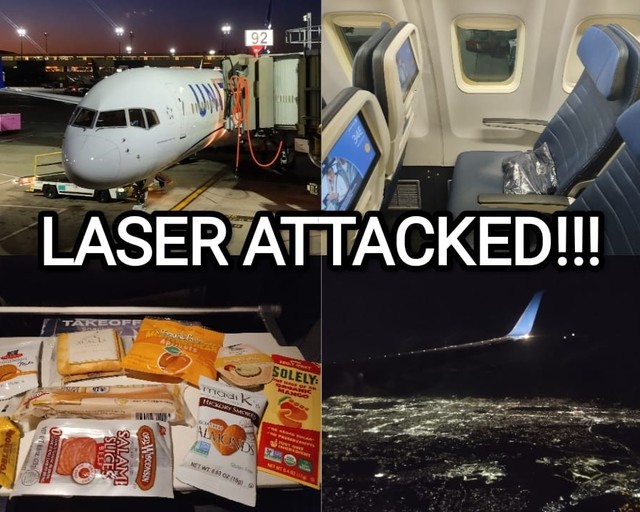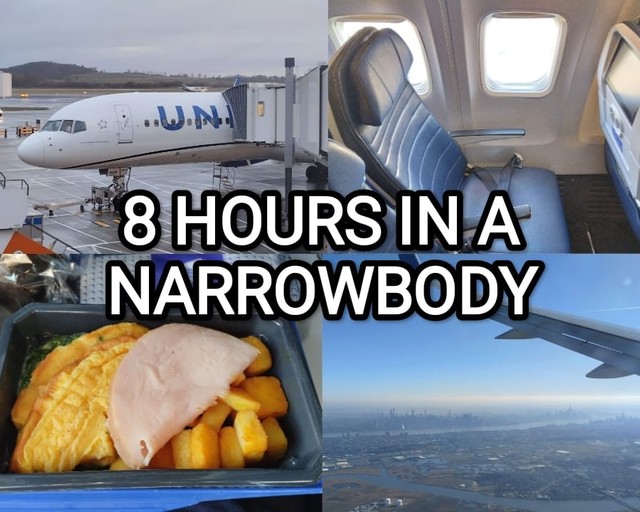Introduction
Welcome, everybody, to another Flight-Report! In this review, I will take you along with me to fly on Aer Lingus Regional on flight EI3656 in Economy Class, on an ATR72-600 from Belfast City BHD to Edinburgh EDI!
This review will cover the airport experiences in Belfast and Edinburgh, including a shock cancellation, as well as the onboard product.
For each aspect of the experience, I will rate it on a scale of 1 to 10. The final score for the full experience will be out of 100.
Booking the flight
This was a single one-way booking from Belfast to Edinburgh. Due to the closer proximity to the city centre, I chose to fly out of George Best Belfast City Airport (BHD), instead of the much further away Belfast International Airport (BFS). A fare of a ridiculous GBP4 + GBP37 in taxes was paid for the flight, booked through Aer Lingus’ app.
Online check-in
Early online check-in opens 15 days prior to departure on an Aer Lingus domestic flight, but seat selection on most fare types still remain paid. Hence, I only checked-in online 48 hours before scheduled departure, and selected the seat that I found rather lovely, 7F, on the app and had my digital boarding pass issued.
Departure airport - Belfast BHD
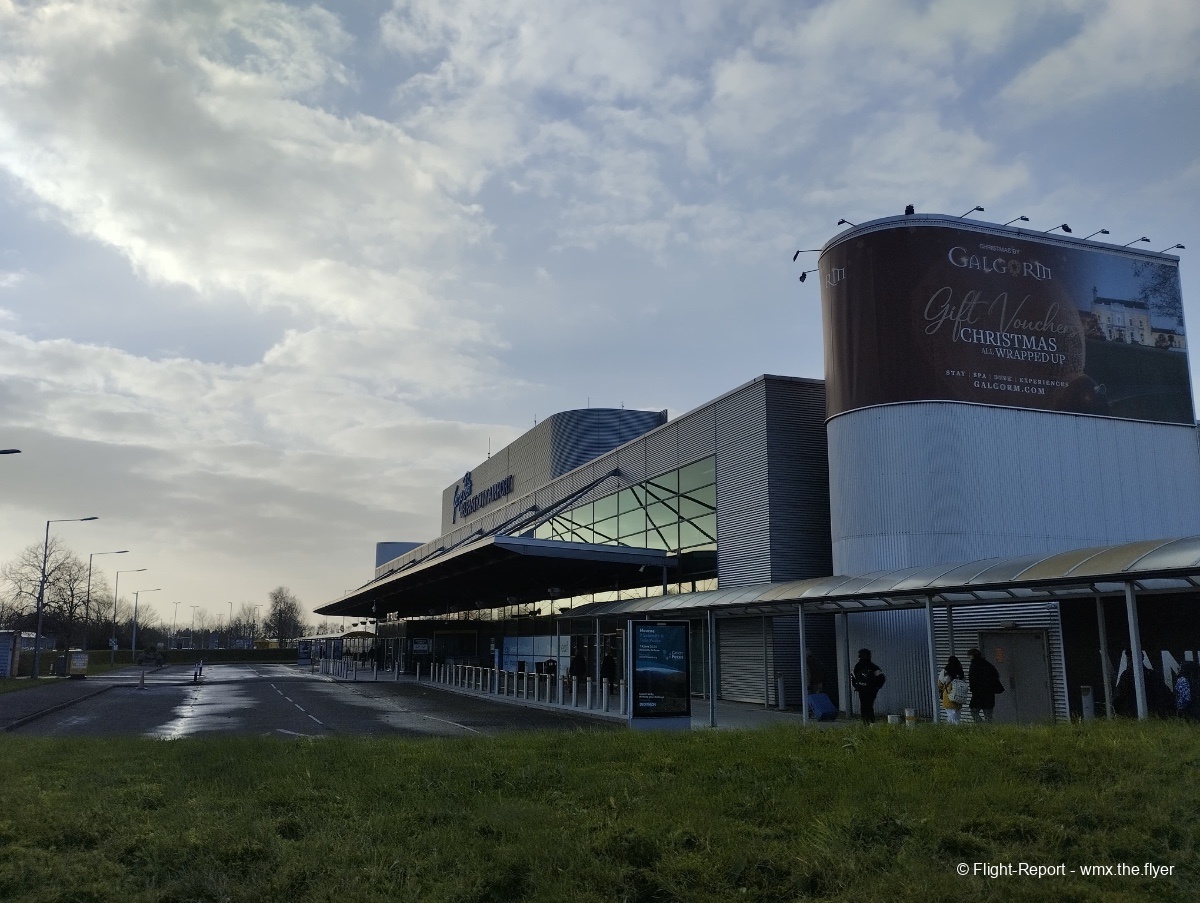
History and Current Operations at the Airport
Belfast City Airport (BHD/EGAC), officially known as George Best Belfast City Airport, opened in 1938 as Sydenham Airport, serving as a base for the Royal Navy during World War II. After the war, it transitioned to civilian use but remained secondary to Belfast International Airport. The airport was renamed in 2006 in honor of legendary Northern Irish footballer George Best. Located just 5km from Belfast city center, BHD has become a vital regional airport, catering primarily to domestic and short-haul European flights. It is a hub for airlines like Aer Lingus Regional and Loganair, with connections to major cities such as London, Manchester, and Edinburgh. The airport features a single terminal and one runway (04/22). In 2023, Belfast City Airport handled approximately 1800000 passengers.
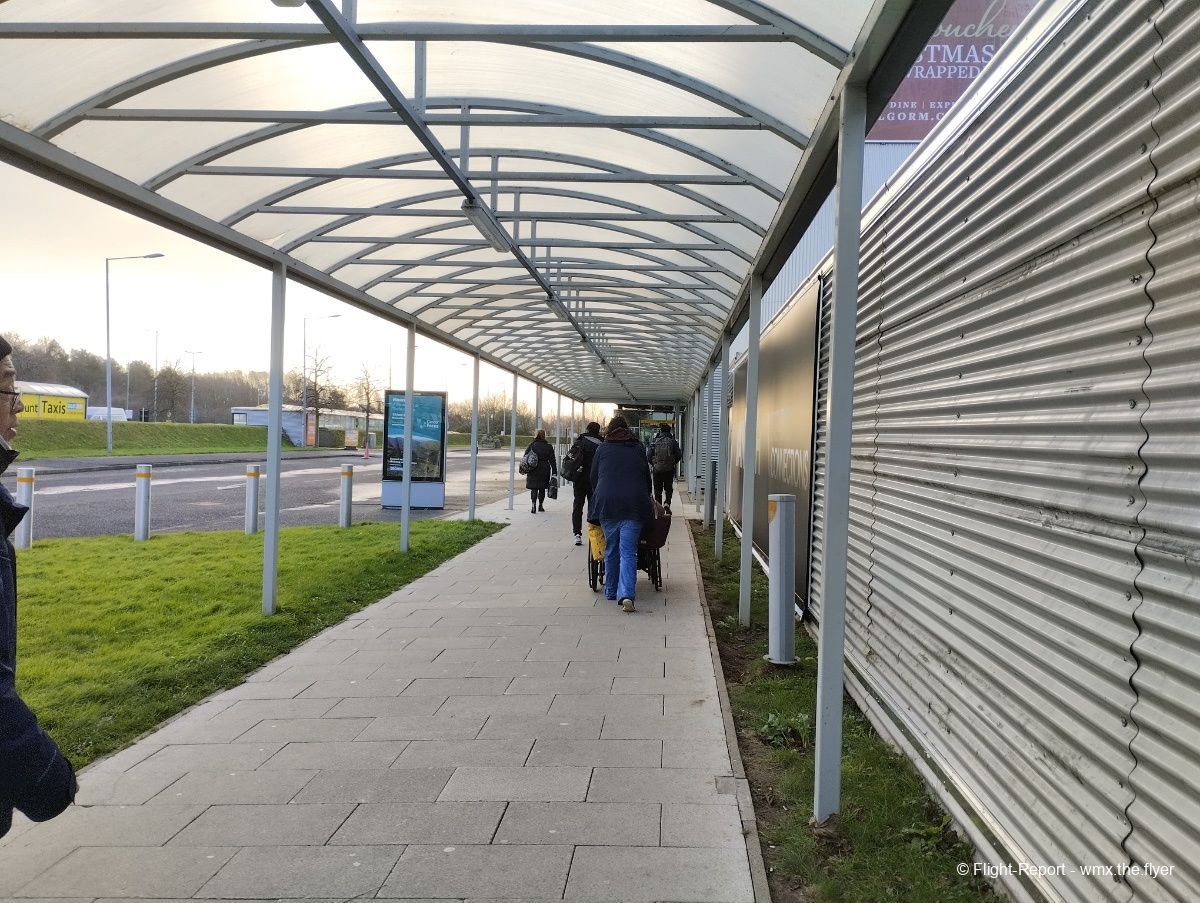
Transport to/from the Airport
At 13:15, exactly 2 hours before scheduled departure time, I arrived at the airport via the service 600 bus. This service runs between the city centre and the airport at relatively regular intervals. Alternatively, passengers can take a local Translink train to the nearby Sydenham station before completing a short walk to the terminal.
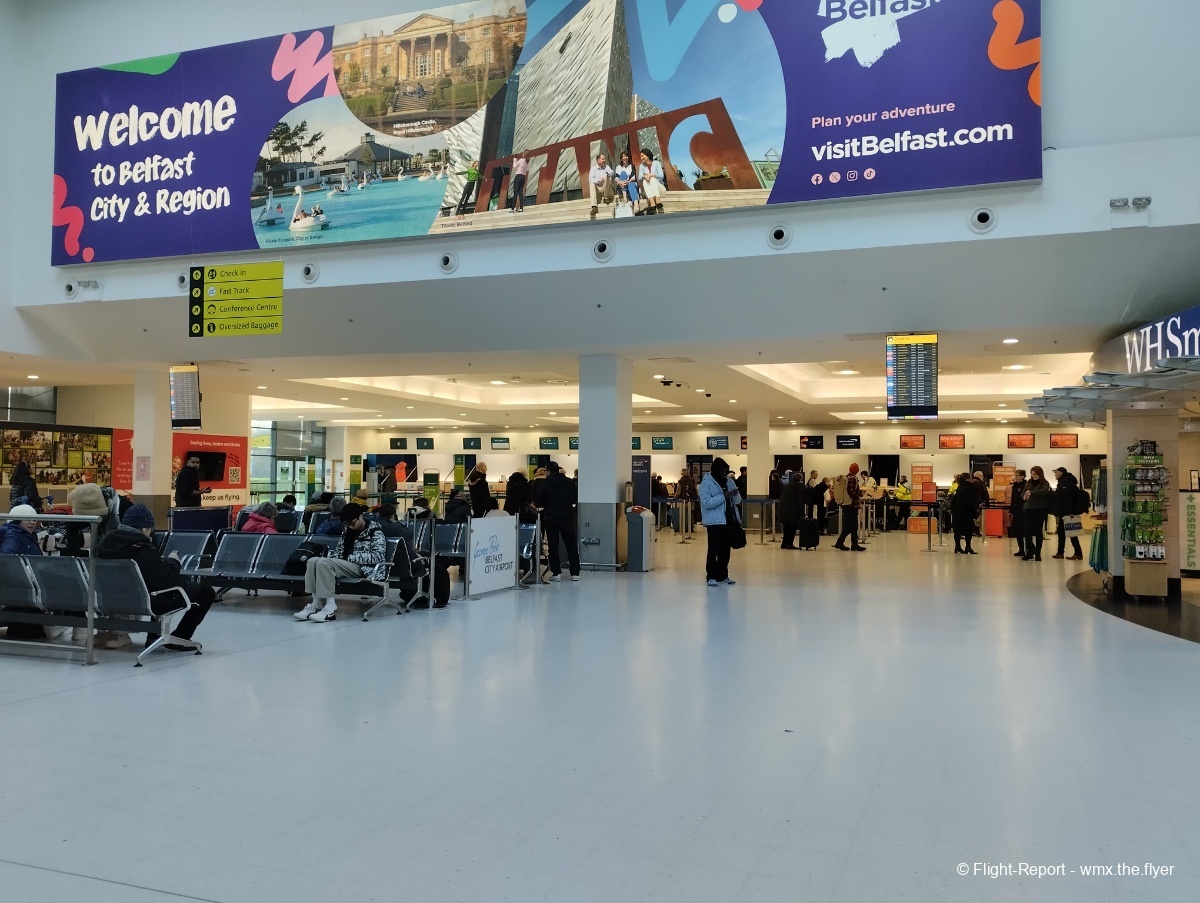

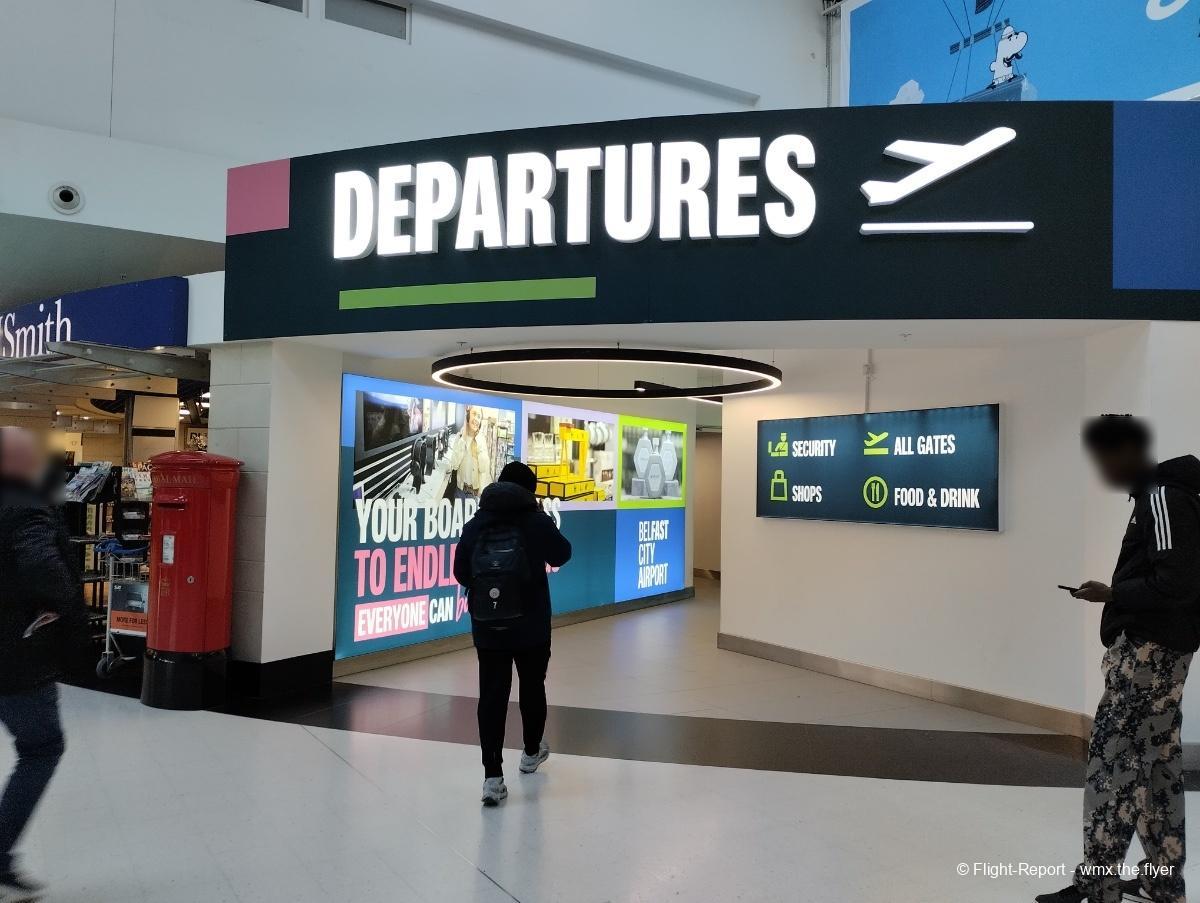
Security
Since there was no need for me to check-in at the airport, I headed straight through the departures gate up towards the security hall. This process was a little slower than I had earlier anticipated as the queues were a little long. It took a little over 10 minutes to my turn, and the scanner raised an alarm meaning I ended up having to be pat down. Still, no major delays here. I love how there is a station where you can wrap gifts for Christmas (or re-wrap if any gifts were torn apart for inspection at security).

Airside
Once airside, there was a maze of duty-free shops that every departing passenger is forced to walk through. First were stores selling airport duty-free items, then a WHSmith, followed by cafes and restaurants.
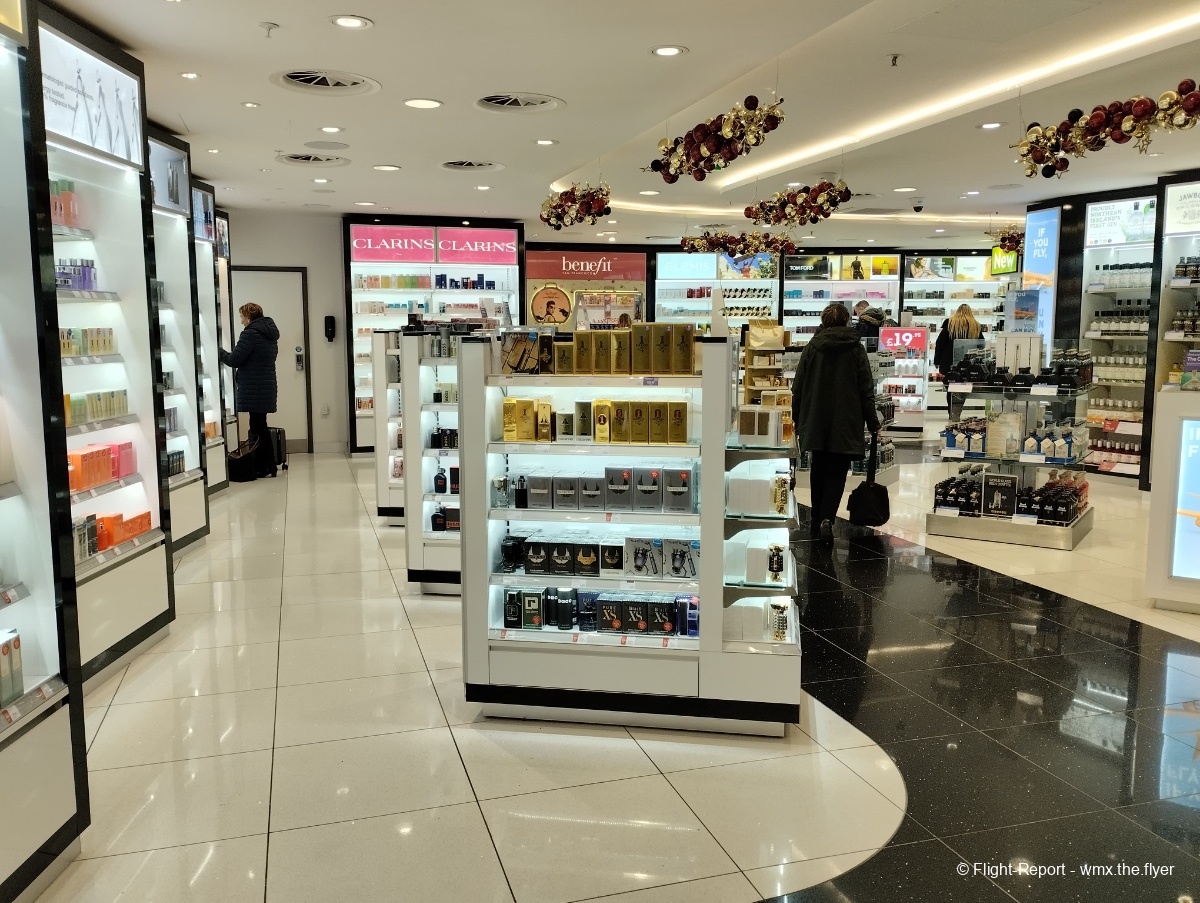
Seating areas were also abundant.

Since I had plenty of time, I had lunch at The Artisan restaurant. The prices were very much screaming UK-Airport, not much to complain about despite it being quite high (about GBP15-20 per person), and the portions were okay.
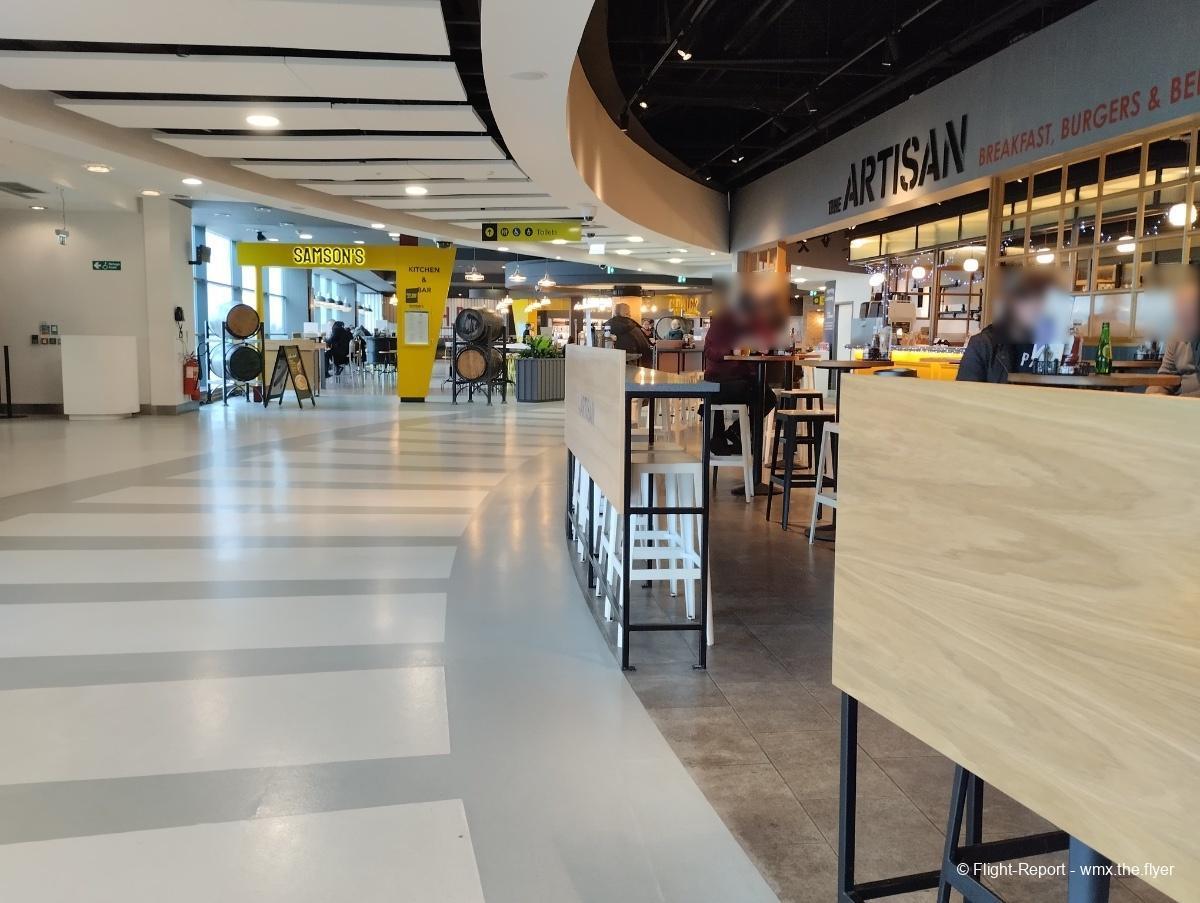
Unfortunately, since my aircraft was delayed on its afternoon return-trip to Leeds from Belfast City, the flight was pushed back to a scheduled departure time of 16:15, an hour behind schedule.
I watched my inbound flight closely on FlightRadar24, it was just second in line behind another ATR72, arriving from Edinburgh. After the Edinburgh flight had landed and disappeared off radar, I was surprised to see my aircraft suddenly climbing and entering a hold just northeast to the airport. Maybe the missed approach was due to the winds blowing it off course or something, I thought, not thinking too much about it apart from the fact that this could potentially push our already-delayed departure time even further back.
Crash landing and cancellations
After having had my meal, I set out for a little stretch for my legs, at about 16:10. Out the corner of the eye, I caught a glimpse of a few ambulances rushing their way across the ramp. Taking a closer look out of another window, it seemed like there was already quite a crowd of emergency vehicles all around a lop-sided ATR sitting in the distance, with their dozens of blue lights flashing. There was already a slight commotion going around in the terminal, with some concerned faces staring on at the mess that was happening in the distance.

Below are a couple pictures of the incident and aftermath found online. Note these below images do not belong to me.

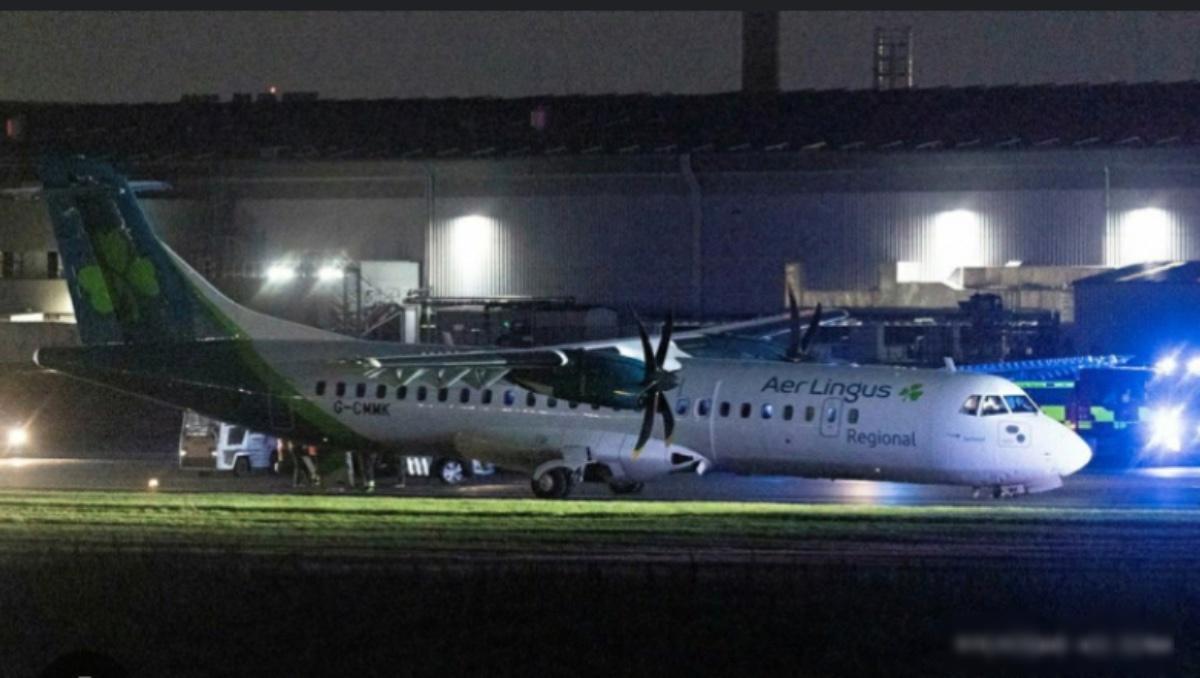
Then, my aircraft, alongside a British Airways Cityflyer Embraer E190 from London City, broke holding pattern and started descent into Belfast International Airport. This certainly meant trouble, I thought, and my hopes of making it out of Belfast this wet and dark afternoon was starting to fade.
Then, the cancellations started. It was first the two easyJet departures, each to Manchester (already boarded) and London Gatwick, that were announced as cancelled. Then the British Airways flight to London City was cancelled. This was no question since the aircraft was very much in a different airport miles and miles away. The departures board showed not much for the next half an hour or so, just displaying that more information would be released at a later time. Then at 17:33, without warning, the screens were hit by a sudden flurry of red on the departures screens; all flights were announced as cancelled.
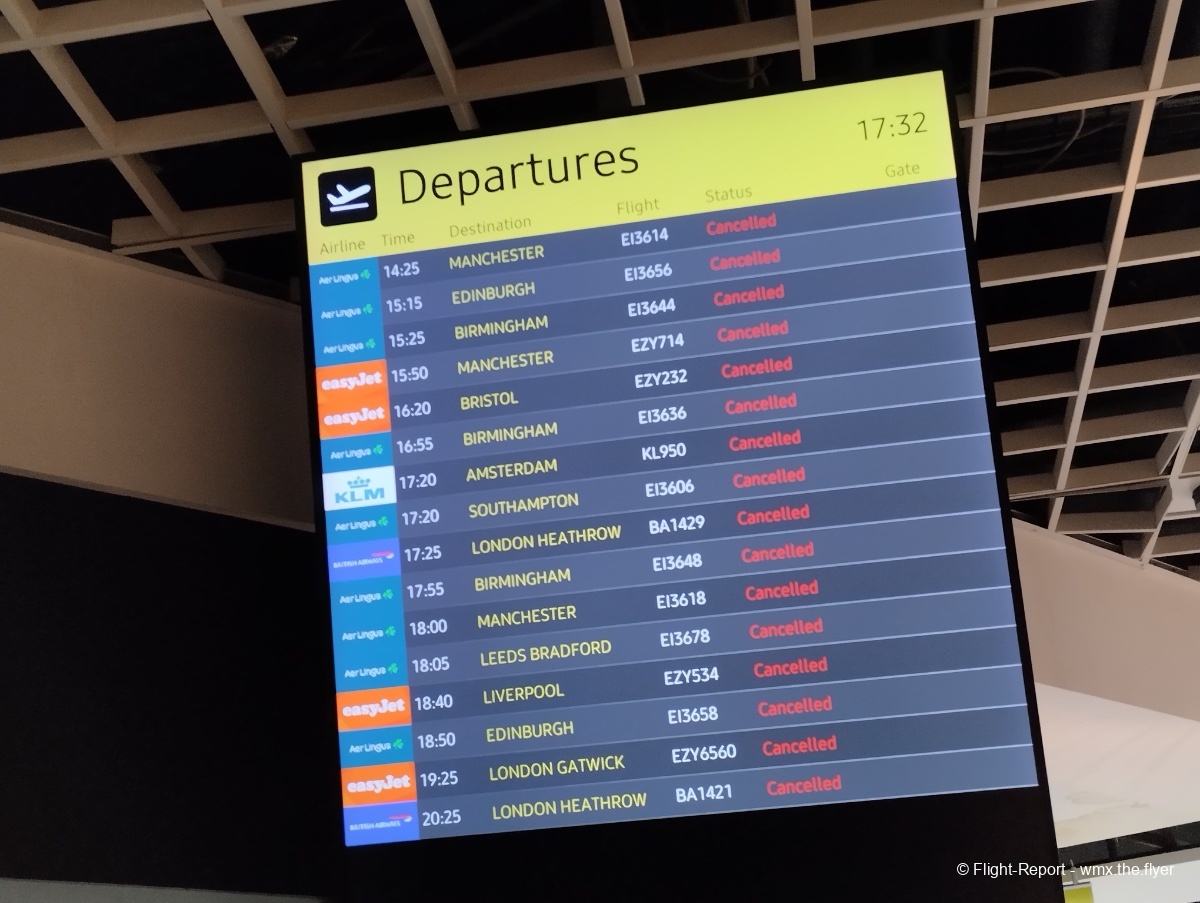
Immediately my first reaction was to call Aer Lingus’ support hotline, but I was already too late as I could not be connected to an agent even after waiting for almost half an hour. The announcements called for passengers to return landside via exits to the baggage reclaim area to reclaim all checked bags.
Reboooking and accommodations
Once landside again, the Aer Lingus desks were piled up with people all with the exact same intention – to ask for refunds and rebookings.

However, the check-in agents repeatedly asserted that they could not help with either, hence there was no point queueing. I did head to the desk, though, to request for accommodation for the night, which the check-in agent agreed to help with at 18:10, though at a cost of around 4 to 5 hours of my time while they collated a list of passengers who needed accommodation and contacted hotels.
Still, I figured I rather waited since I did not want to hassle with claiming anything from the airline after I had booked a hotel myself. While the check-in agent could not directly help with rebooking me on a different flight (the Aer Lingus app could not either), I checked with her whether she had access to an internal hotline which could connect me to someone who could in fact help, since the public ones were virtually inaccessible due to the high traffic volume. To my utmost relief she agreed and within seconds of dialing the number I was connected to a call agent through the telephone at the desk.
But of course, things did not work out straight away, with the online agent telling me that I could not change flights free if charge since their systems had not yet shown that the flight was cancelled, rather just delayed (mind you, this was already more than hour after the flight got cancelled). Hence I was forced to wait for a while to try again.

At 19:36 I finally got a text from Aer Lingus informing me that my flight had unfortunately been cancelled (might be the only time I ever rejoice at such a text). I headed over to the desk again and this time, after connecting on the internal hotline with a call agent, was able to change my flight. I was given 3 choices: a 06:55, a 15:15 (same flight as the one I was to be on), and a 18:50 departure. I would have preferred the 10:10 but that flight had already been booked out. I settled with the 15:15 after some consideration.
The rest of the wait was just lounging around in the seating area of the departure hall, seeing the staff responsible strolling around, chatting amongst themselves, and occasionally on the telephone apparently on task with arranging our accommodations.
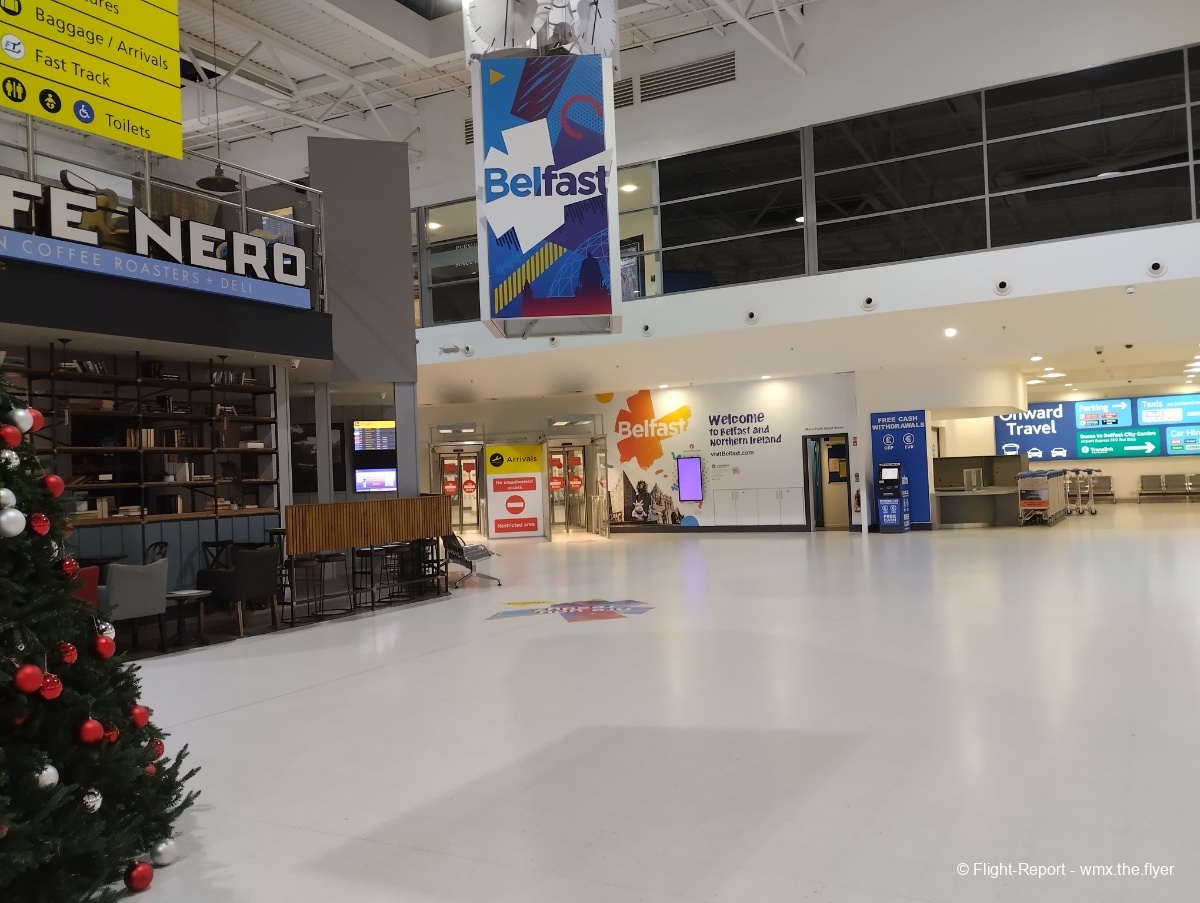
At an excruciating 21:55 they finally came around confirming to the 9 of us on the list about our hotel which would be the Leonardo, which they had arranged for, as well as taxis being on the way to pick us up. The bulk of us then headed to the pick-up stand they had pointed out for us, and patiently waited for our taxis to arrive. However, the minutes ticked by, and still no taxi appeared. At 22:21 someone went back into the terminal building to ask, then after some contacting found out that the taxis had all gone to Belfast International, the wrong airport.

Everyone headed back to the terminal again while the taxis were repositioning.
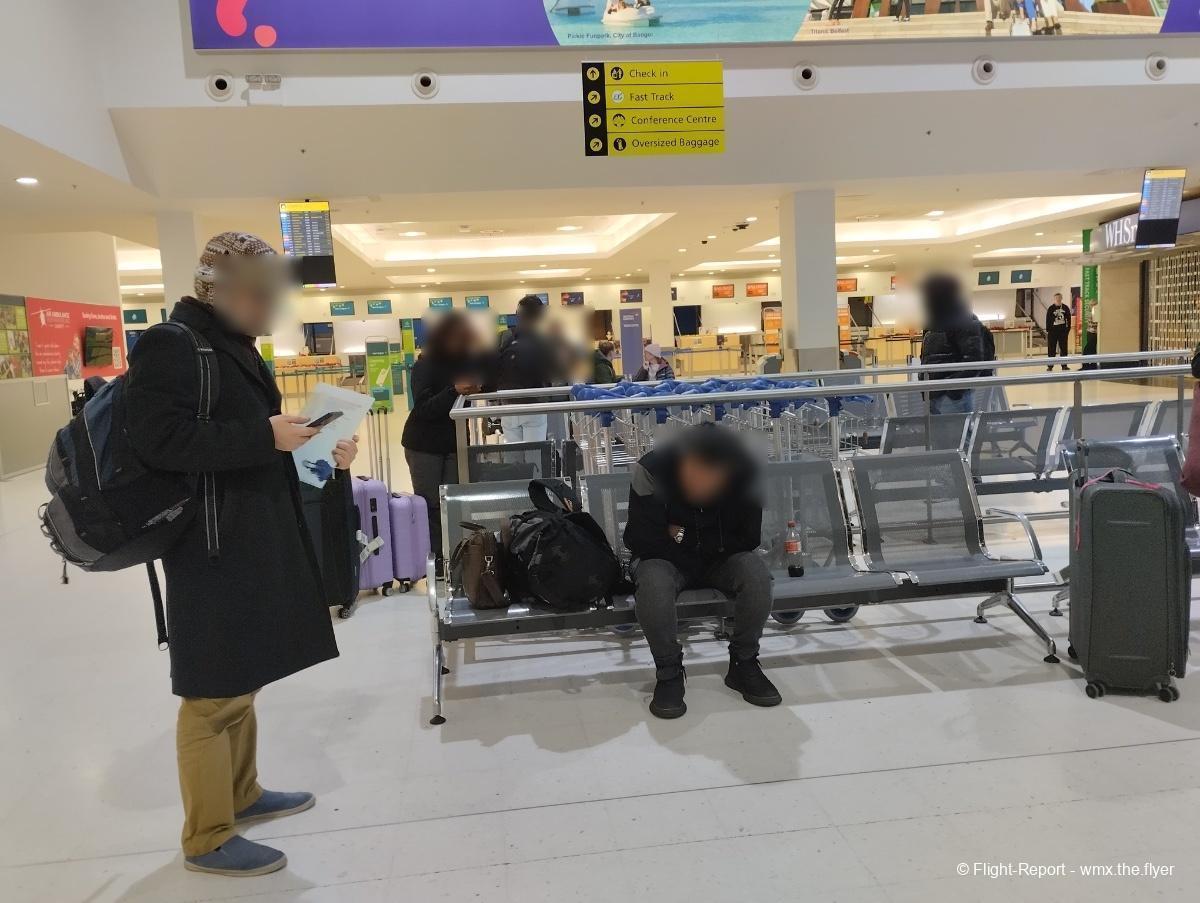
At 22:36, we were beckoned out again. This time, after a few minutes wait, taxis started pulling into the stand, and each passenger (or group of passengers) had their own assigned cars. I was finally heading to accommodation for the night.
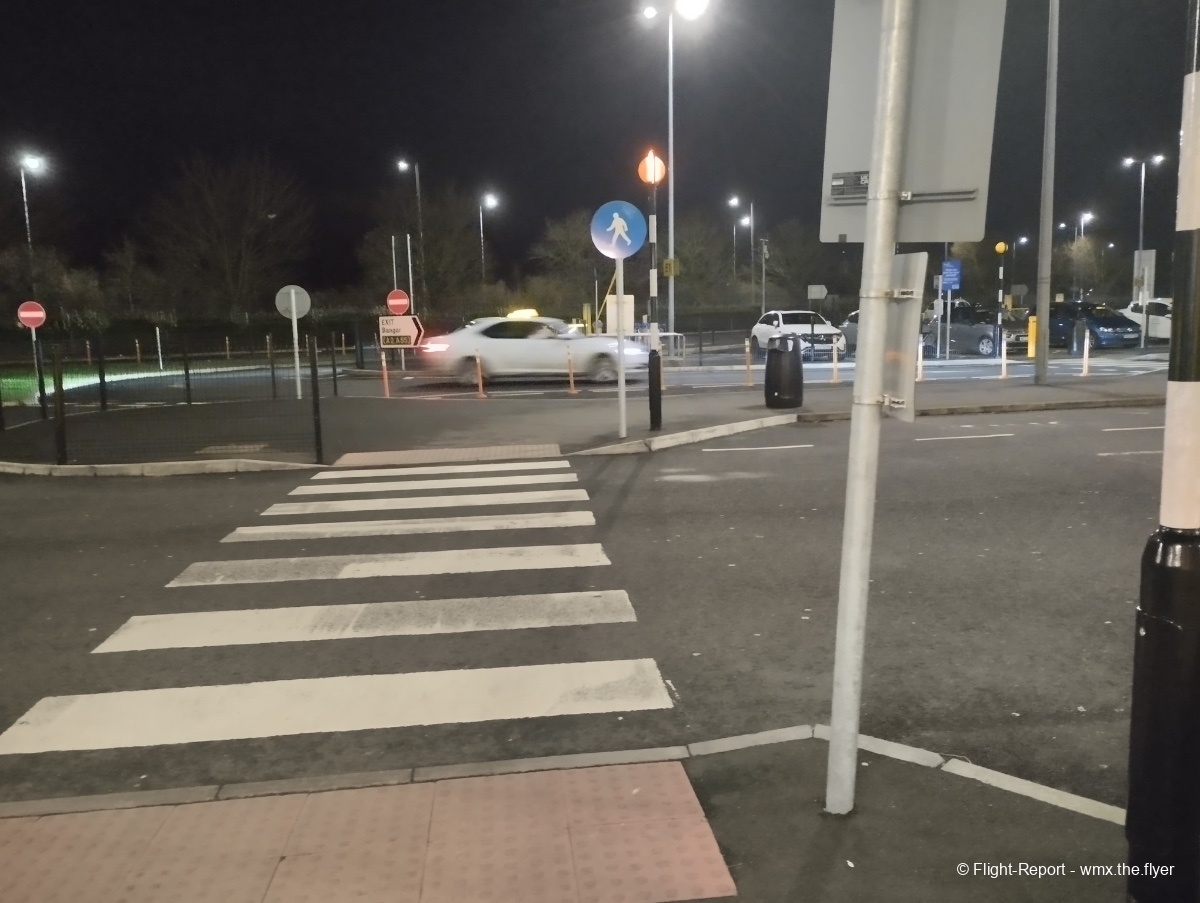

The trip was short thanks to the short distance between the city and the airport, as well as the lack of traffic at these hours. At about 22:50 we pulled up to the hotel. Check-in at the hotel came with another surprise, as the staff there informed us that no breakfast had been included in the bookings despite the airport ground staff having promised breakfast with our rooms. With a stroke of inspiration I asked for breakfast to be added to the booking then have the costs billed to whoever made the booking instead. This worked well, and I was soon settling into my room for the night.

Some view, that.
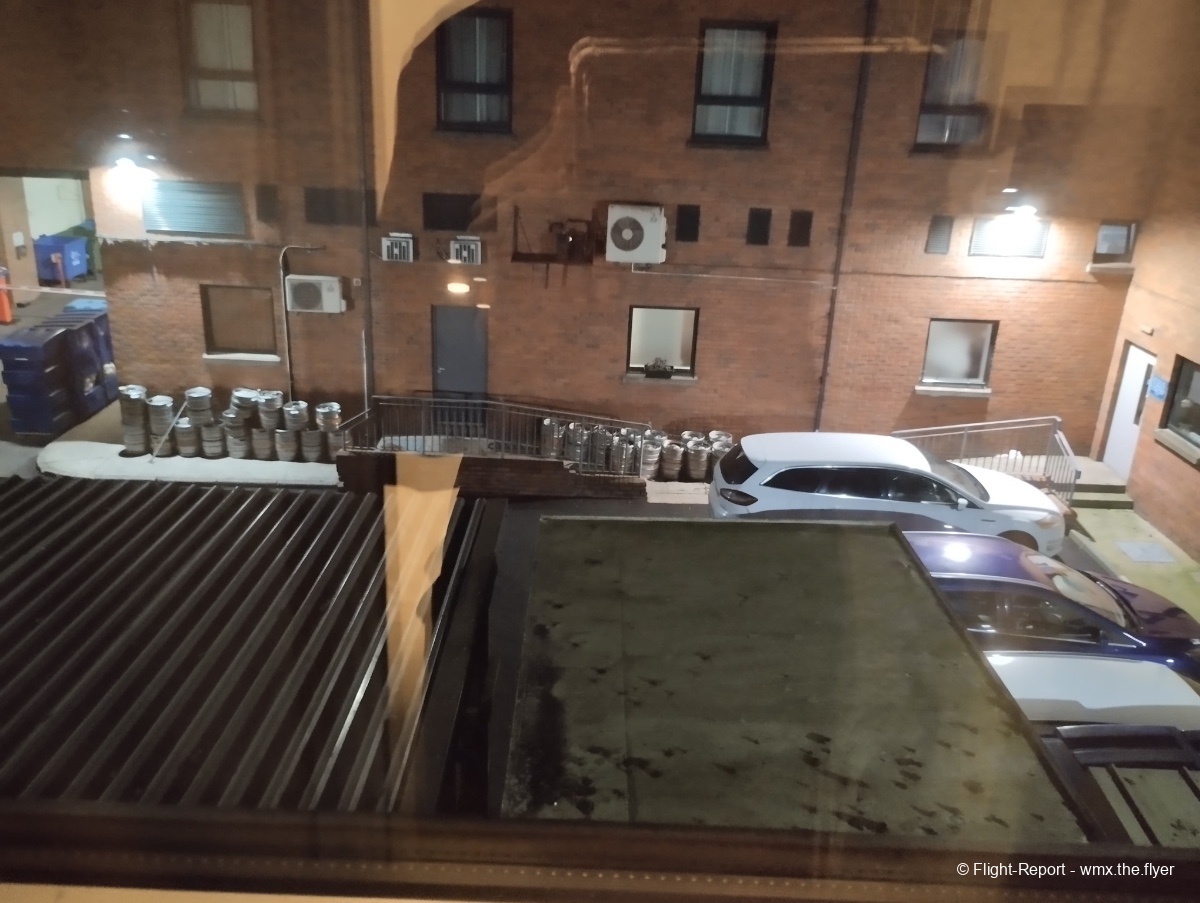
Online check-in (again)
Unfortunately, due to the timing of rebooking of this flight, most of the seats on the aircraft had already been taken. I was forced to choose 14B, an aisle seat.
Departure airport (again)
The next day came, and I was deciding on how to head to the airport. Seeing the relatively short distance between the city and the airport, and that I only carried a backpack, I decided on walking there. Setting out at 11:15, the walk took almost 2 hours and I reached the airport terminal at 13:11 with a casual strolling pace. The walk there took me past St George’s Market, the CS Lewis Square, along Conn’s Water, through Victoria Park, before arriving at the airport.
The views along the way were pretty, but it was raining so my shoes were unfortunately completely soaked by the time I arrived at the airport. Thank heavens for my waterproof clothing though.

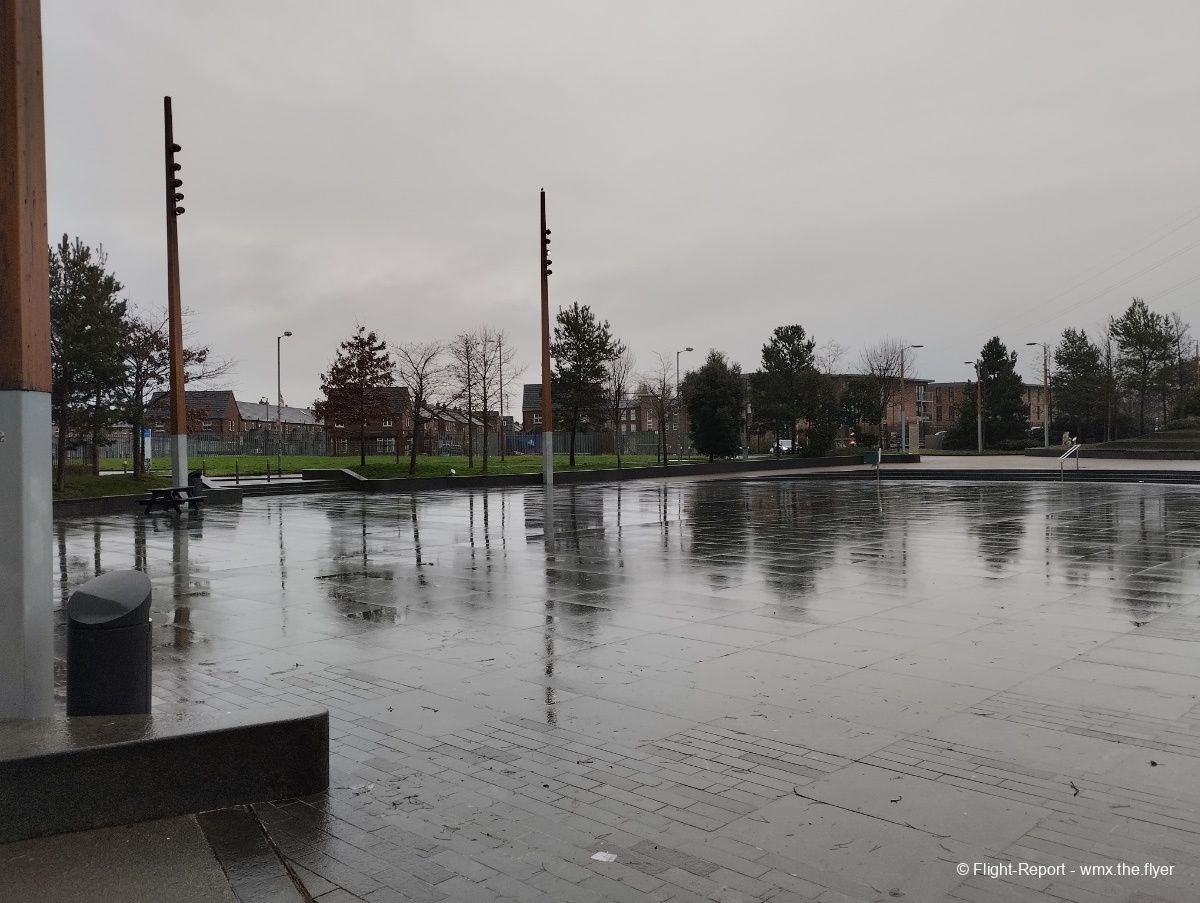
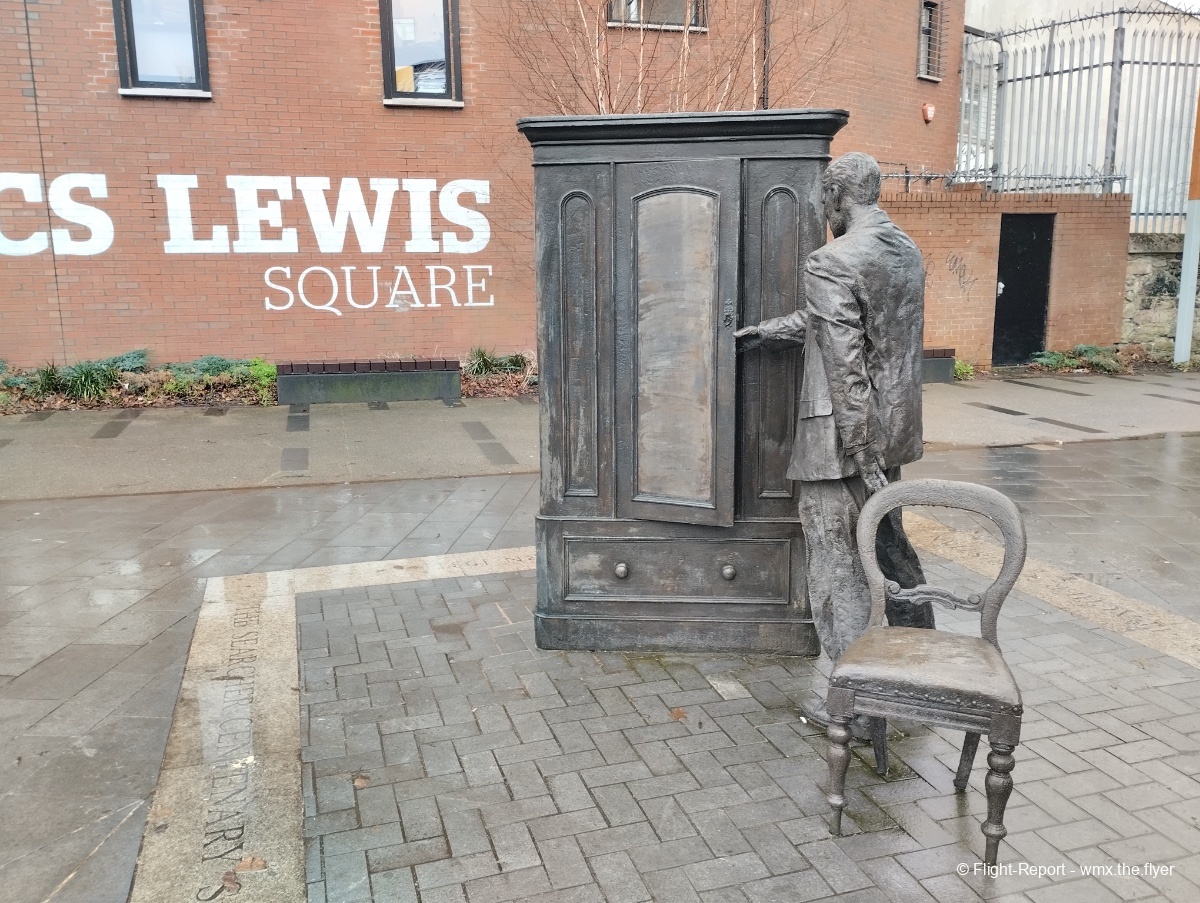
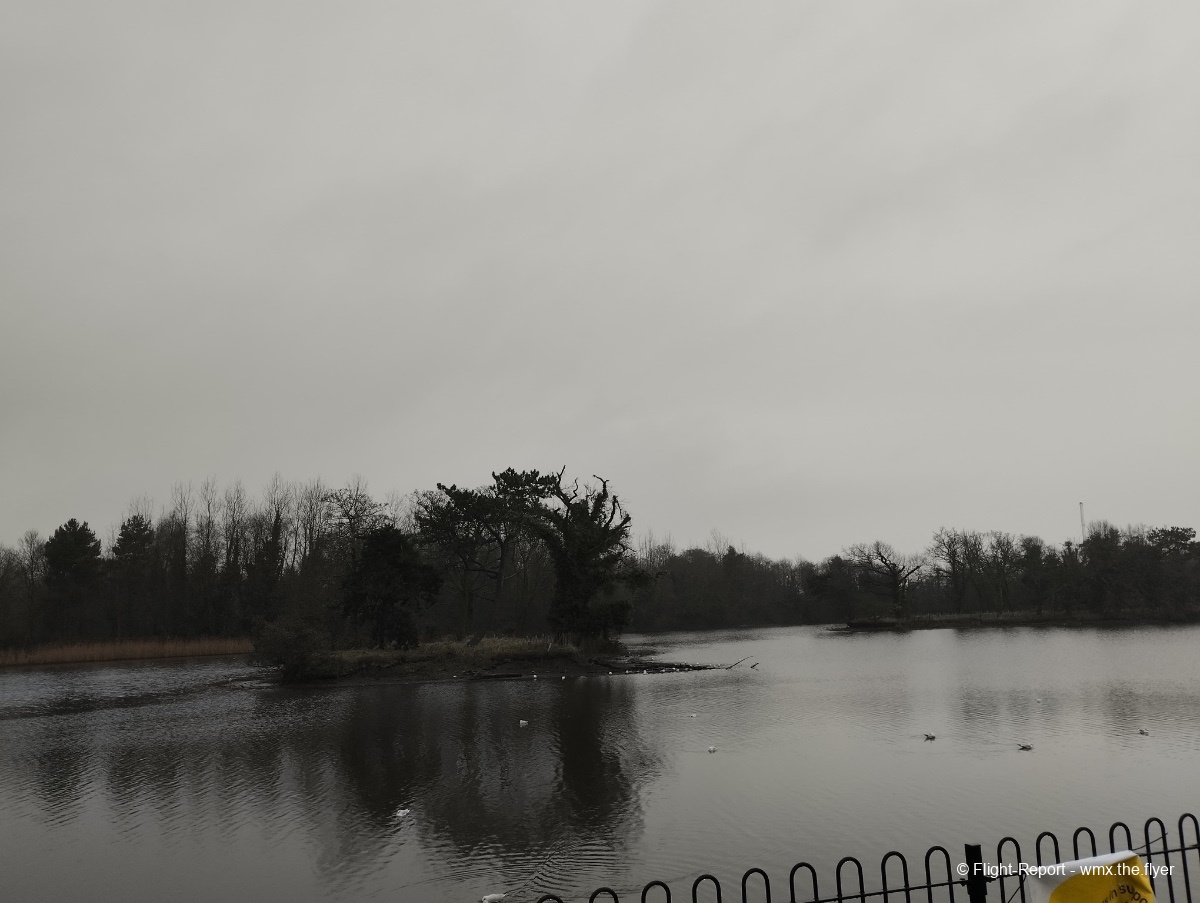
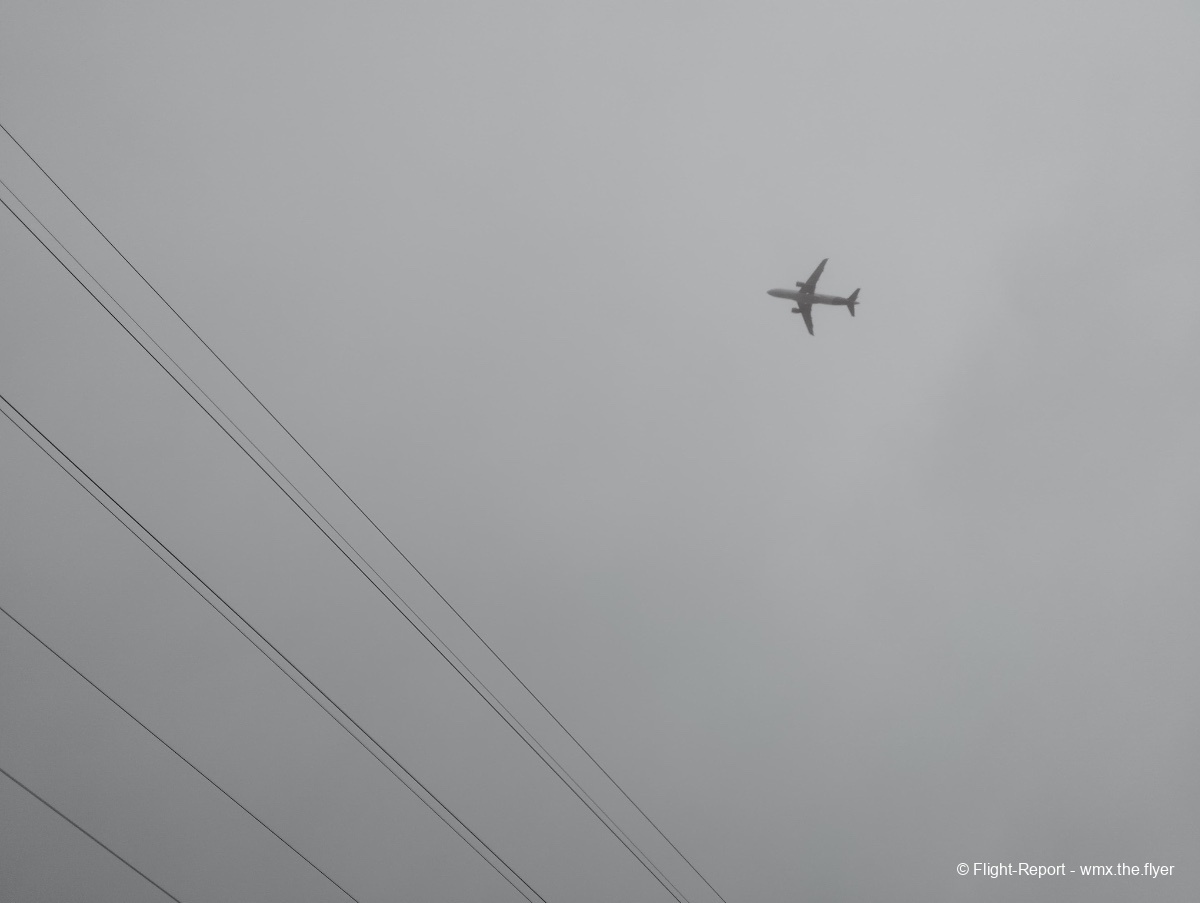
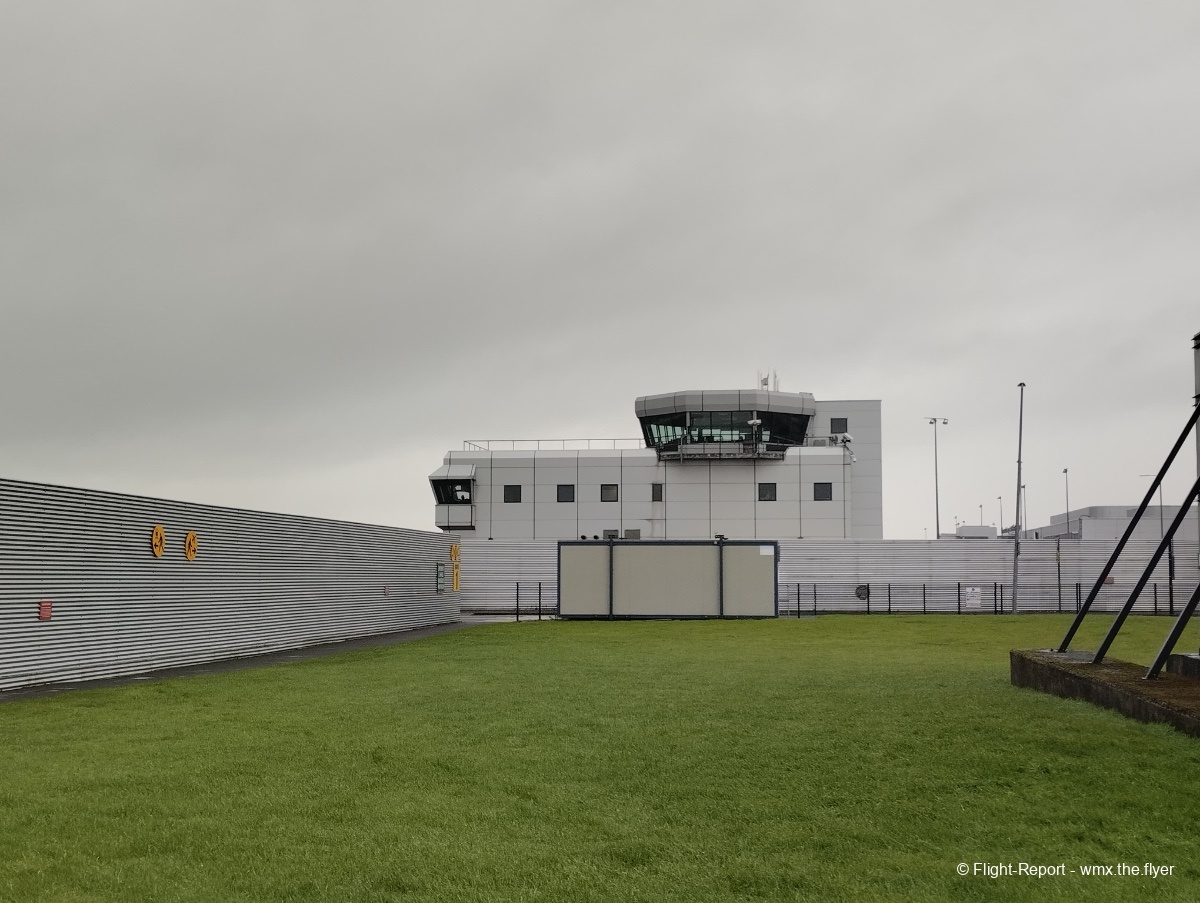
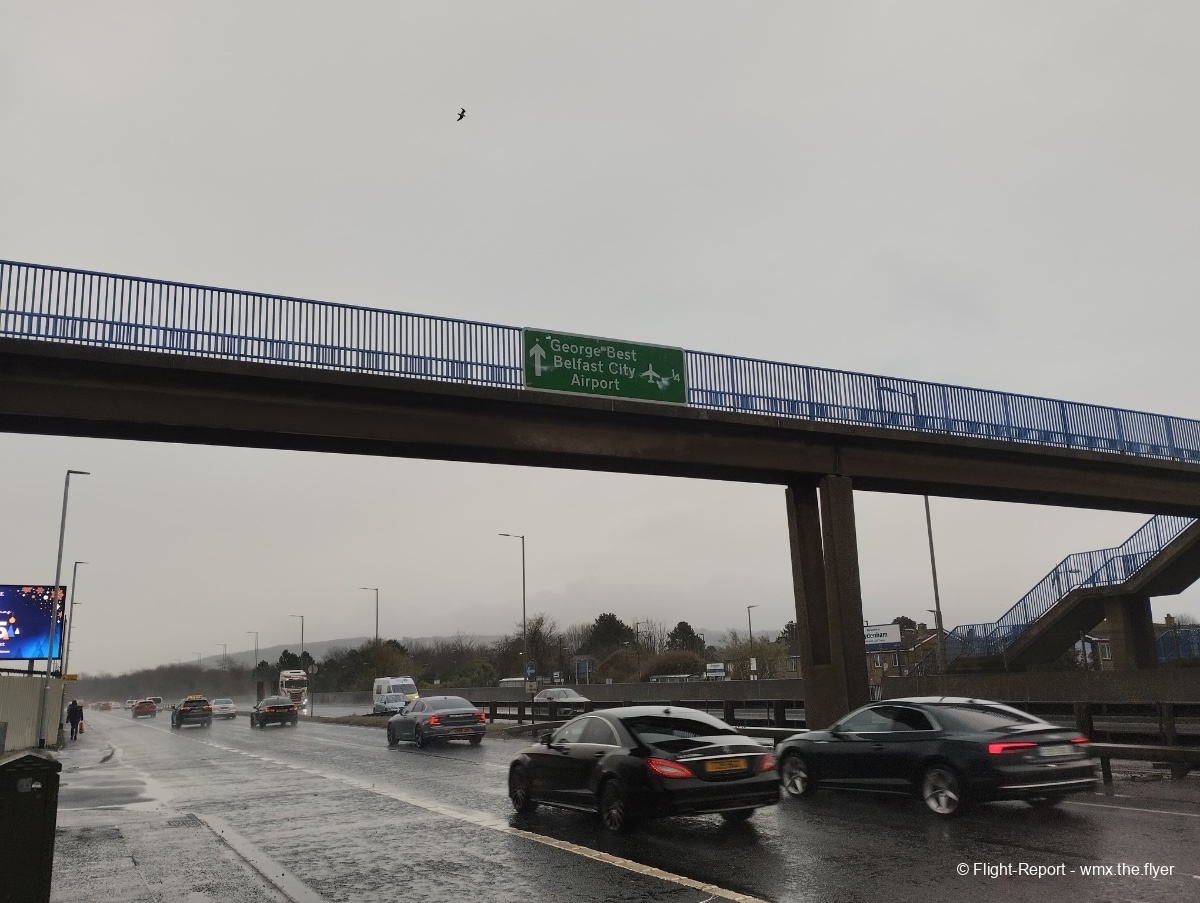
Through the airport’s fences I saw the accident aircraft of the previous day at a stand in a remote corner.

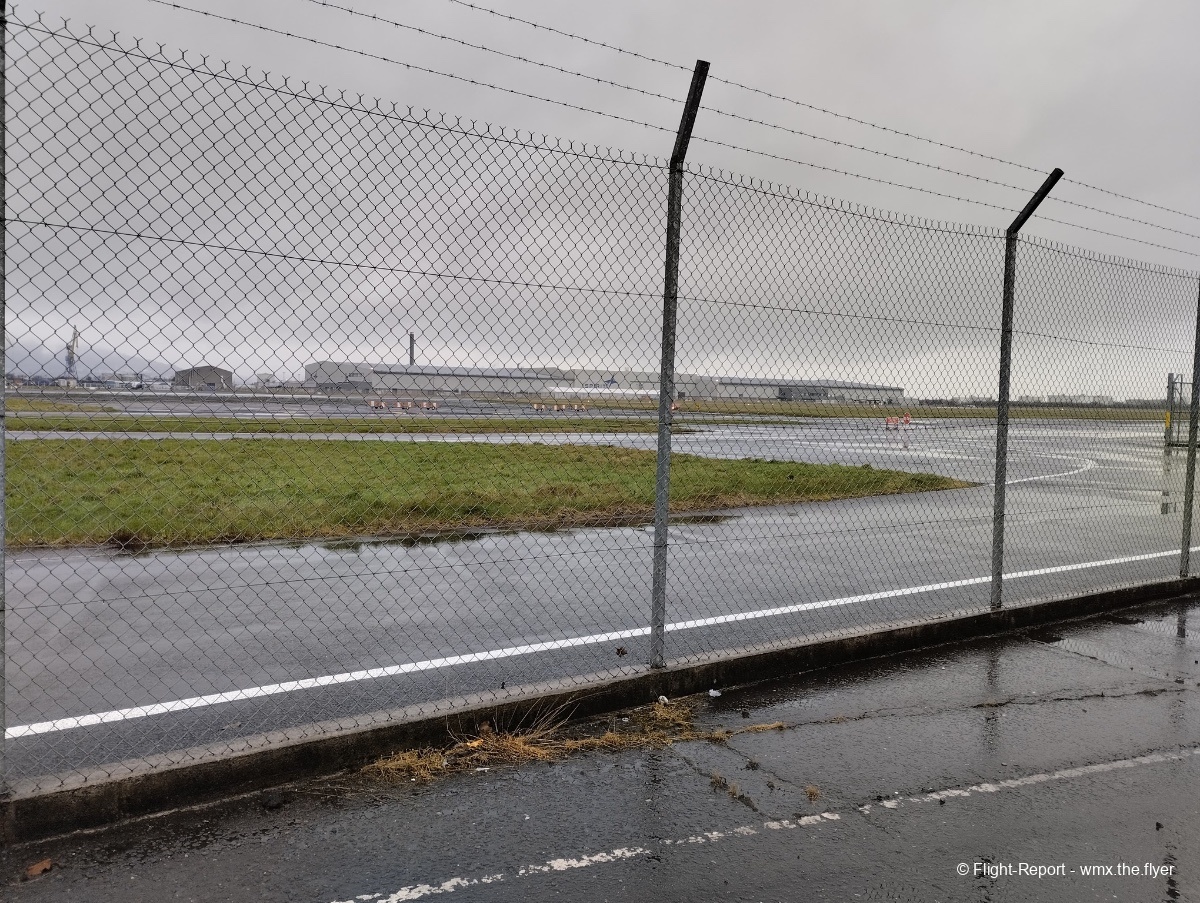
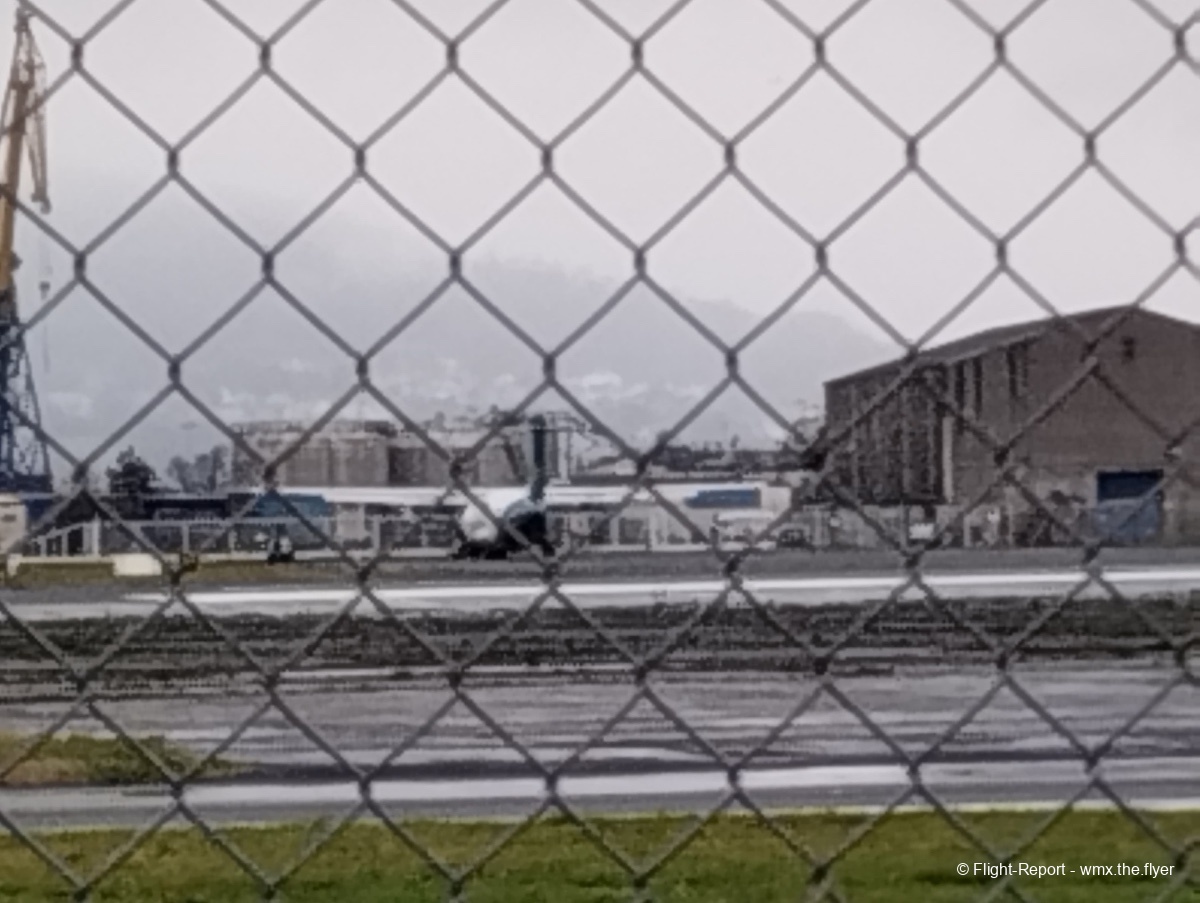
The experience going through security and heading airside was pretty similar to the previous day, so I will not go too deep into that here. I did not end up eating this time as I had a good breakfast at the hotel buffet earlier.
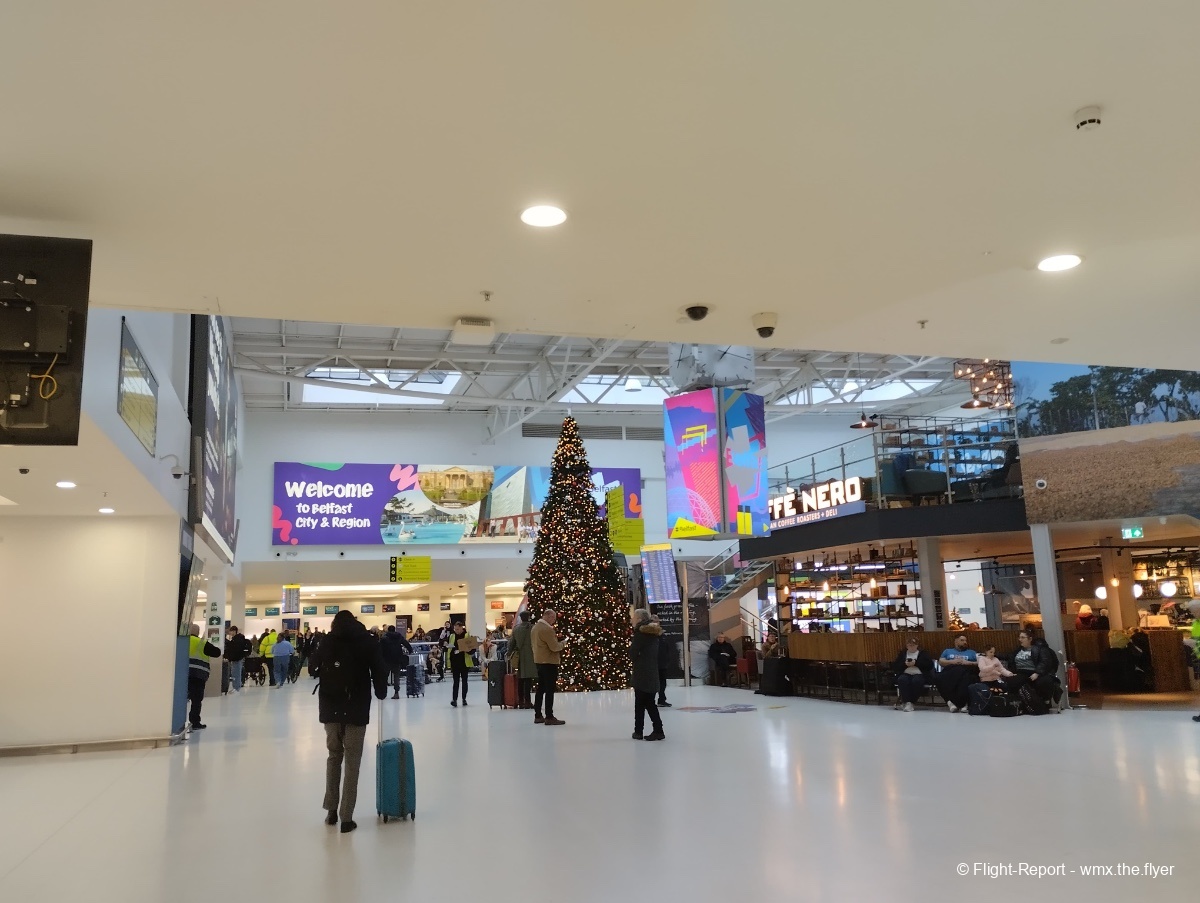
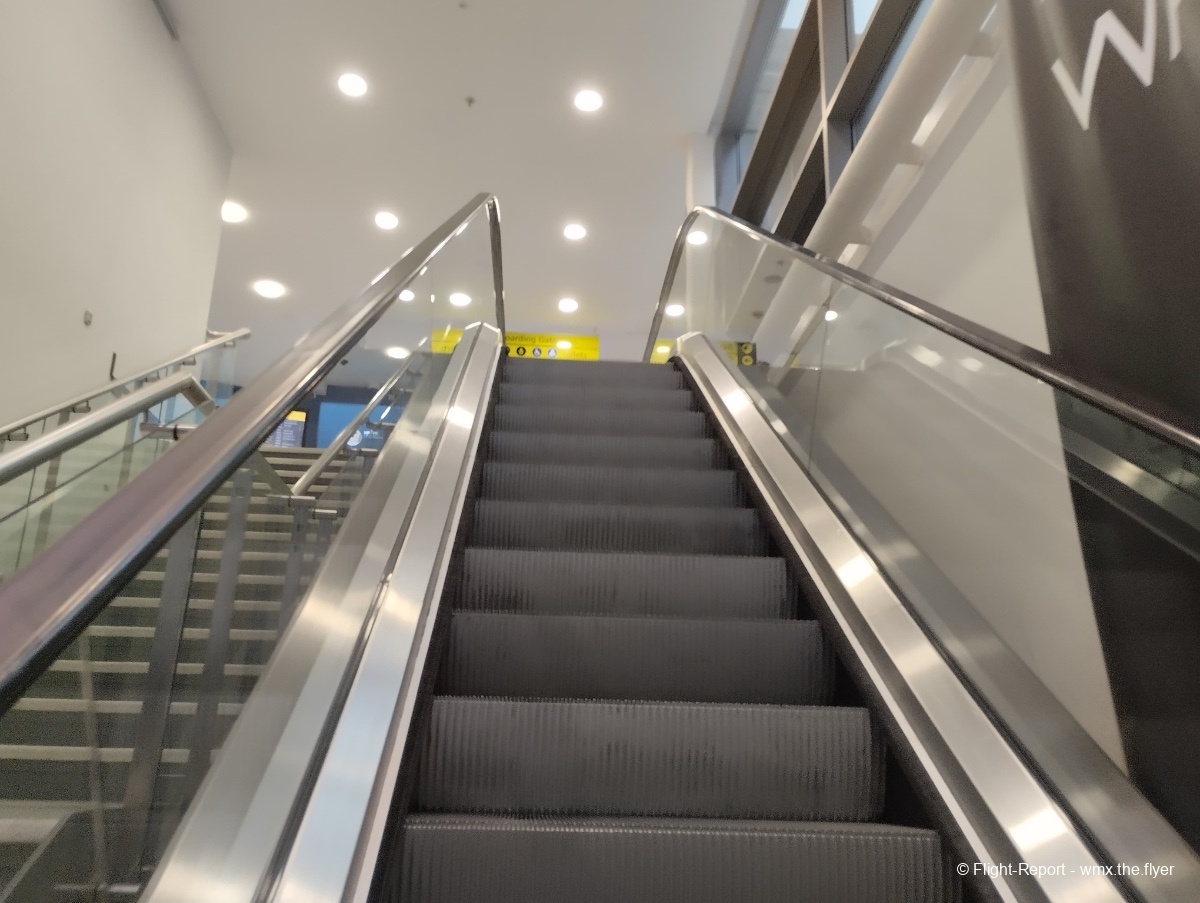
I was bemused to see the departures board showing an estimated departure time of 16:00 for the 06:55 flight, that’s even later than my 15:15!

Flight and aircraft information
Finally, as I watch my aircraft arrive inbound from Dublin, is the time for the detailed information about the flight and the aircraft.
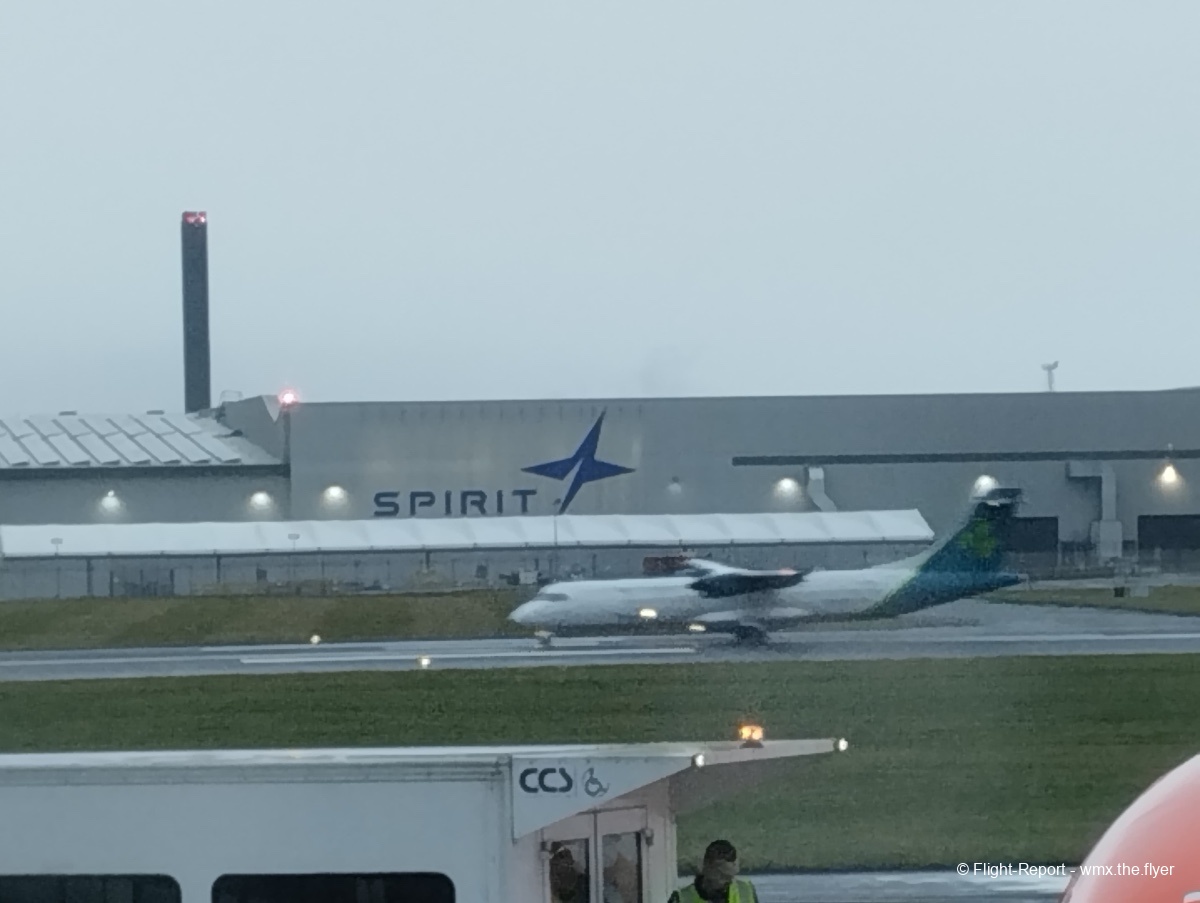
Flight Information
Flight date: 23/12/2024
Airline: Aer Lingus Regional (EI/EIN)*
Operated by: Emerald Airlines UK (EA/EAG)
Aircraft and Crew by: Emerald Airlines Ireland (EA/EAI)
Flight Number: EI3656
Callsign: EAG56B (Greenstone 56 Bravo)
Route: George Best Belfast City BHD – Edinburgh EDI
Scheduled Departure Time: 15:15 (UTC)
Actual Departure Time: 16:24 (UTC)
Scheduled Arrival Time: 16:15 (UTC)
Actual Arrival Time: 17:07 (UTC)
Scheduled Flight Time: 01h00min
Actual Flight Time: 00h43min
Aircraft Information
Aircraft Registration: EI-GZV*
Aircraft Livery: Aer Lingus Regional
Aircraft Name: St Colgan / Colchu
Aircraft Type: ATR72-600
Engines: 2× PWC PW127M
Manufacturer Serial Number (MSN): 1107
First Flight: 05/09/2013
Aircraft Age (as of flight): 11 years 03 months
Aircraft Delivered: 27/04/2022
Seating Configuration: Y72
*The flight is usually operated by Emerald Airlines UK for this UK domestic flight on behalf of Aer Lingus Regional, and my original aircraft was one of those, registered G-CMML. However, due to the circumstances with the fleet the aircraft was changed multiple times during the hours before departure, and we ended up with this Irish registered aircraft operated by Emerald Airlines Ireland instead. To operate this leg the aircraft had to reposition from Dublin DUB shortly before this leg.
History of the Aircraft Type
The ATR 72 is a twin-engine turboprop regional aircraft developed by ATR, a joint venture between Airbus and Leonardo. First introduced in 1988 as a stretched version of the ATR 42, the ATR 72 was designed to accommodate more passengers, offering seating for 68-78 passengers compared to the ATR 42’s 40-50 seats. The ATR 72-600, introduced in 2009, is the latest and most advanced version of the aircraft. It features improved Pratt & Whitney PW127M engines, a modern glass cockpit with advanced avionics, and an upgraded cabin for enhanced passenger comfort. The -600 variant offers better fuel efficiency, reduced operating costs, and increased payload capacity, making it a favorite among airlines for regional operations.
History of the Airline
Aer Lingus Regional was established in 2010 as a regional brand under a franchise agreement between Aer Lingus and Stobart Air (formerly Aer Arann). The brand was created to operate short-haul domestic and regional European routes on behalf of Aer Lingus, connecting smaller cities to Aer Lingus’ main network. The service operated primarily out of Dublin Airport (DUB), with additional hubs at Cork Airport (ORK) and Belfast City Airport (BHD). In 2021, following the liquidation of Stobart Air, Aer Lingus Regional flights were temporarily disrupted. However, Emerald Airlines was appointed as the new operator for the brand, officially resuming services in February 2022. As of 2024, Aer Lingus Regional operates a fleet of 18 ATR 72-600 aircraft, of which 7 operate under Emerald Airlines UK and 11 are of Emerald Airlines Ireland. The airline currently serves 14 regional destinations in the UK, Ireland, and France.
Boarding
Boarding took place at gate 2, which was accessed by heading downstairs and walking through the long walkway to almost the end of the terminal building. Here, the boarding was split into 2 groups based on row numbers, with the first 9 out of the 18 rows of the aircraft having priority boarding since the aircraft could only be boarded from the back like on all ATRs.
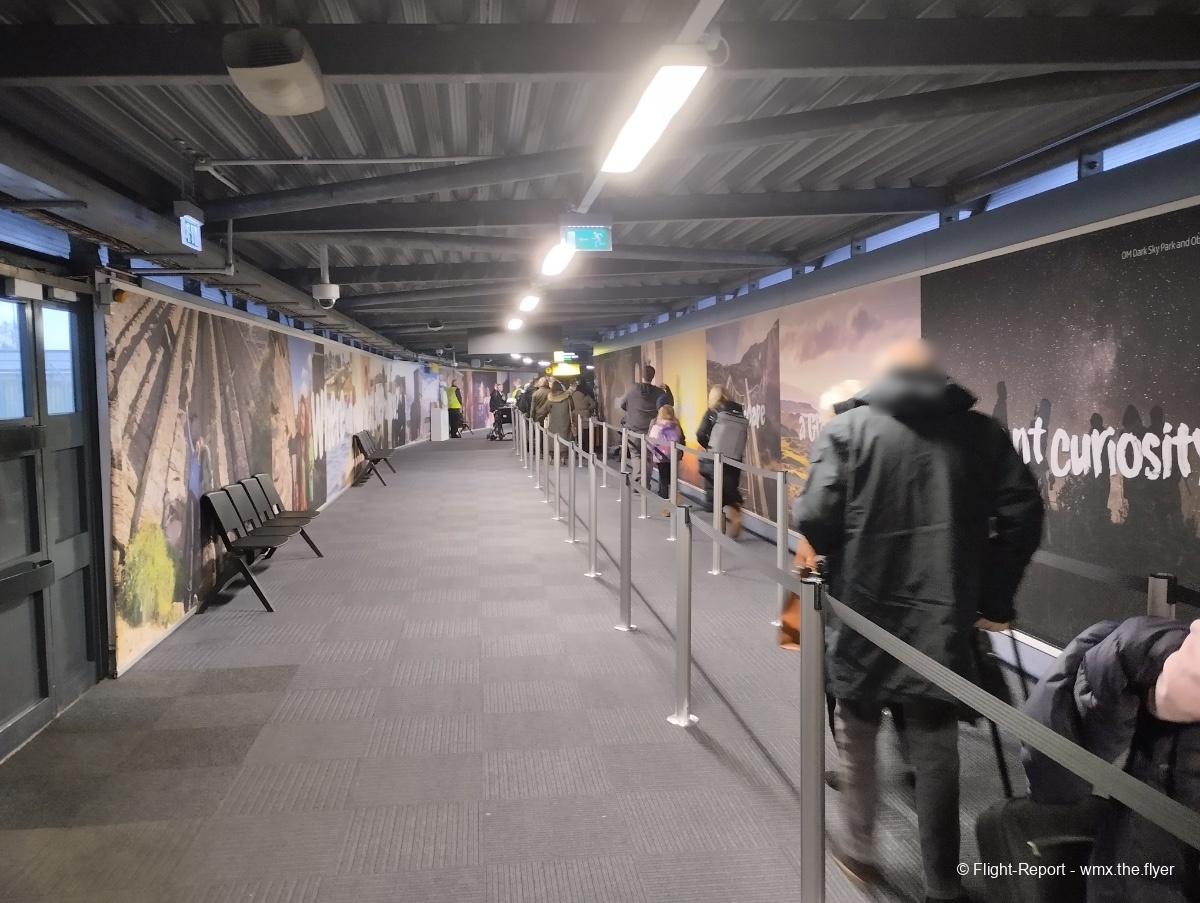

The line for boarding moved fast and soon after having my digital boarding pass scanned I was out on the apron in front of our gorgeous Irish ATR72 that would fly me over to Scotland.
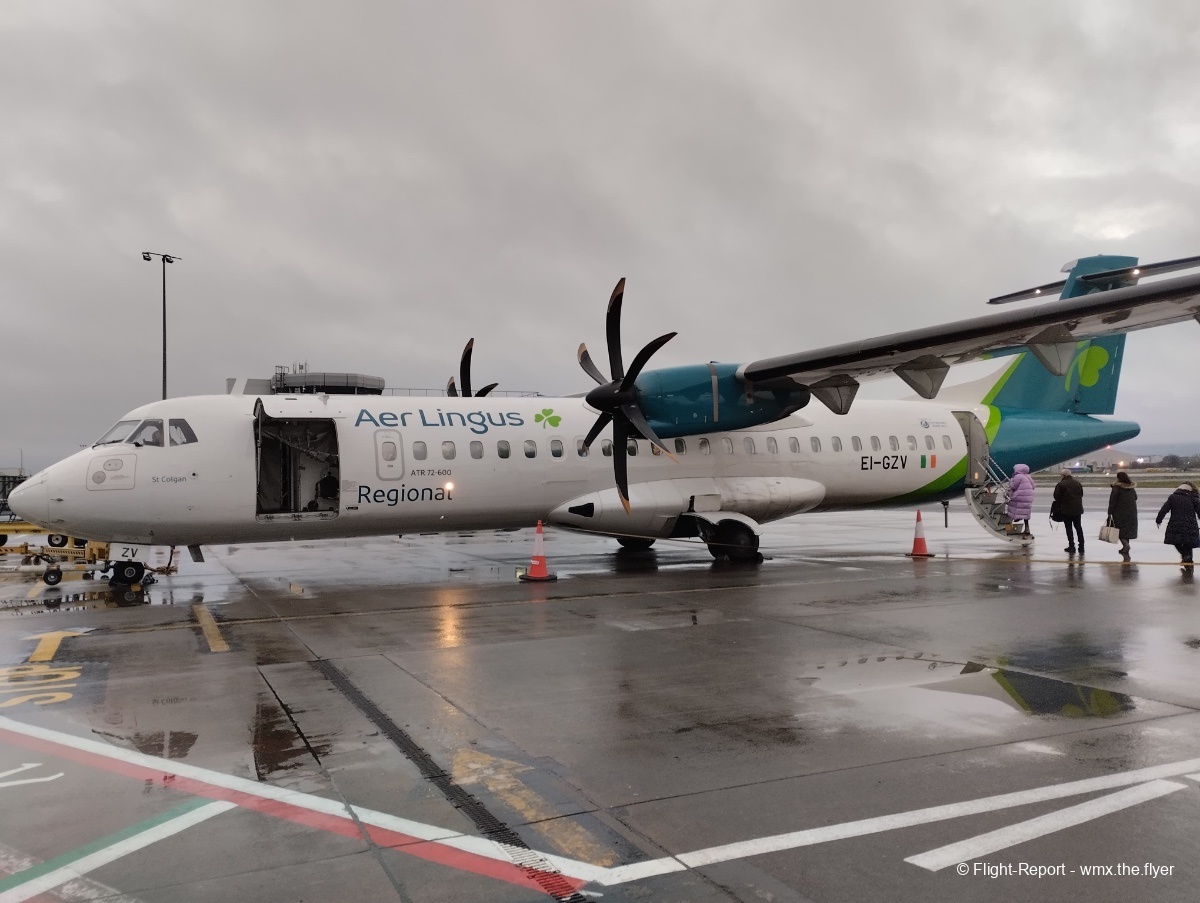


Cabin + Seat
Upon boarding I quickly found row 14, which was the 5th last row from the back of the aircraft where boarding was conducted. I settled into my allocated seat 14B while 14A remained temporarily vacant.
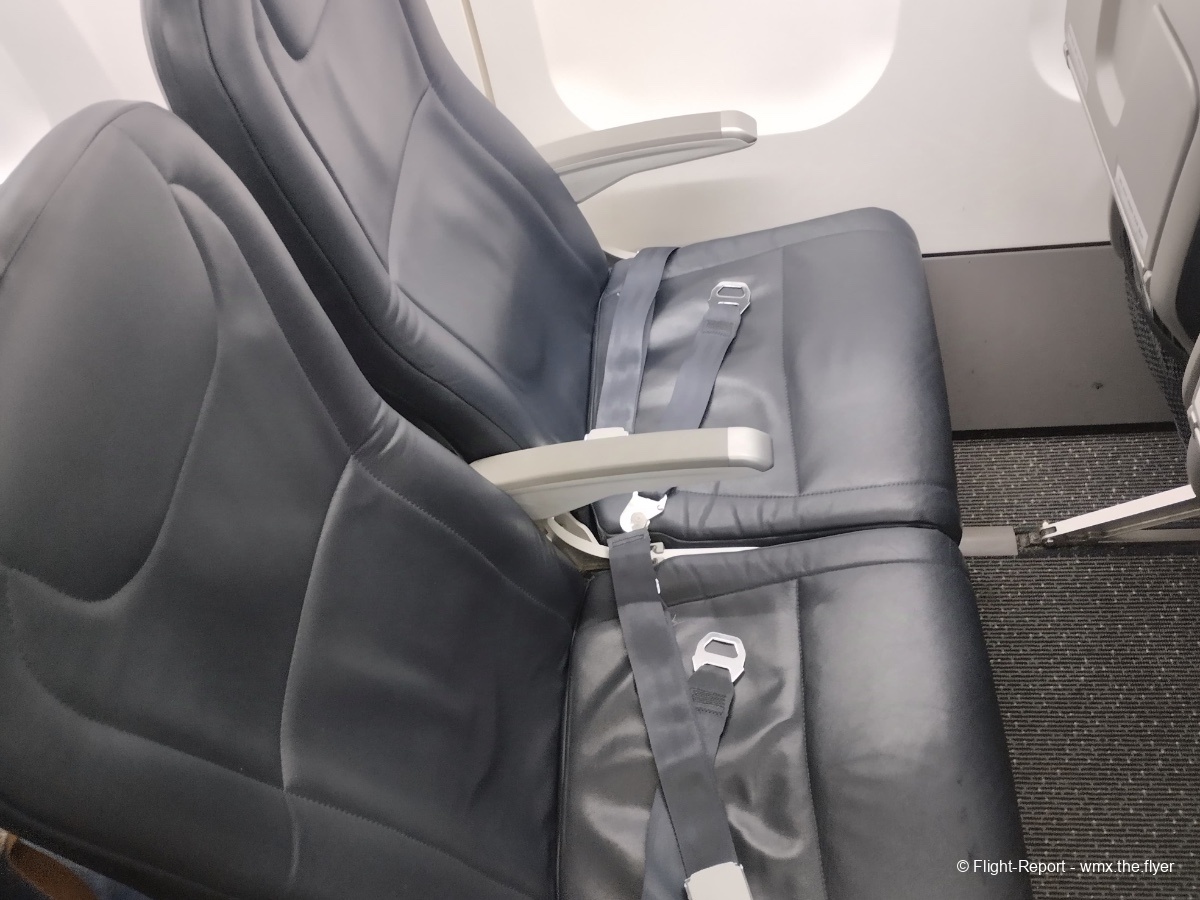
The lady who was allocated seat 14A soon appeared, and to my utmost delight, after a brief verbal confirmation with a nearby flight attendant she agreed to swap seats.
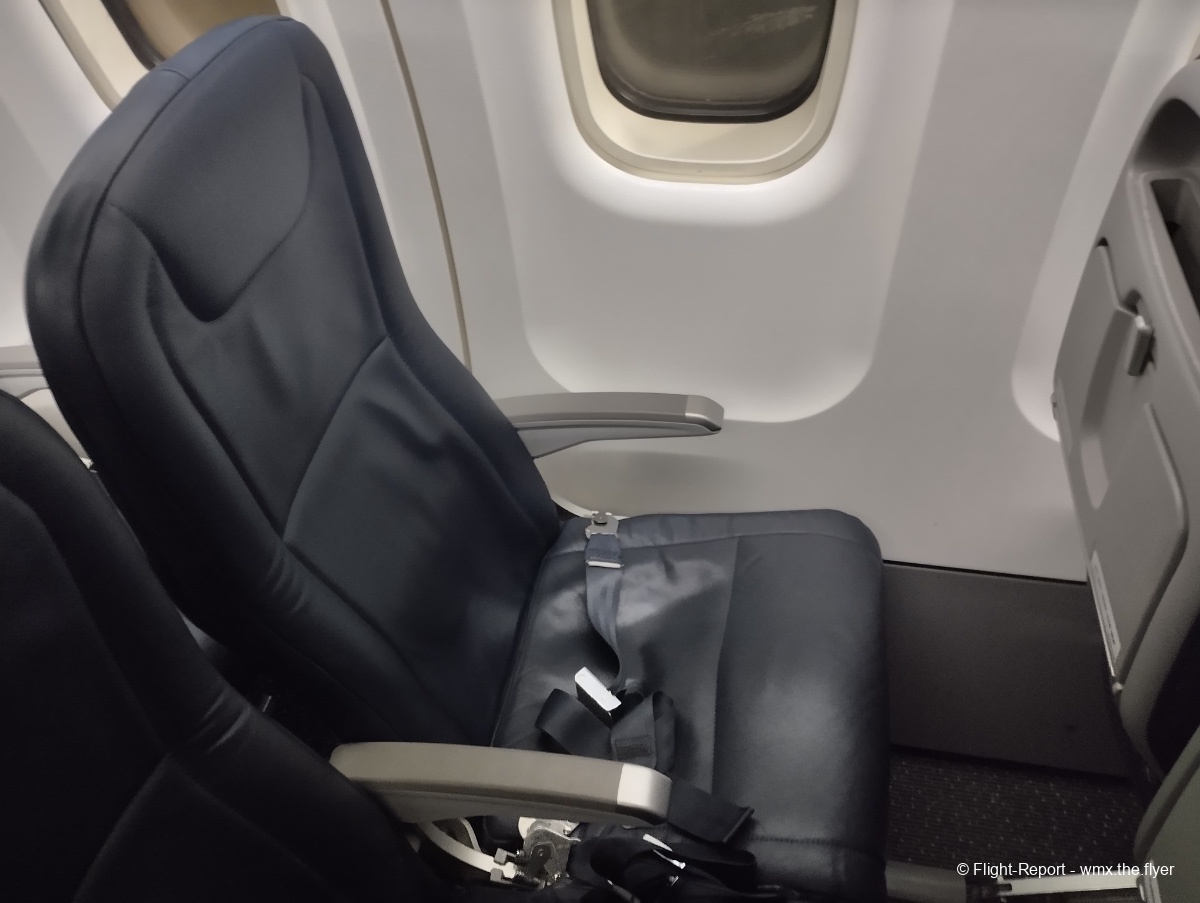

Seat Details
Seat: 14A (Port-side window seat)
Seat Type: Slimline
Seat Model: no public data found
Seat Manufacturer: no public data found
Seat Pitch: 29”
Seat Width: 18”
Class: Economy (Y)
Cabin: Main cabin
Seating arrangement: 2-2

Features:
Retractable, extendable tray table

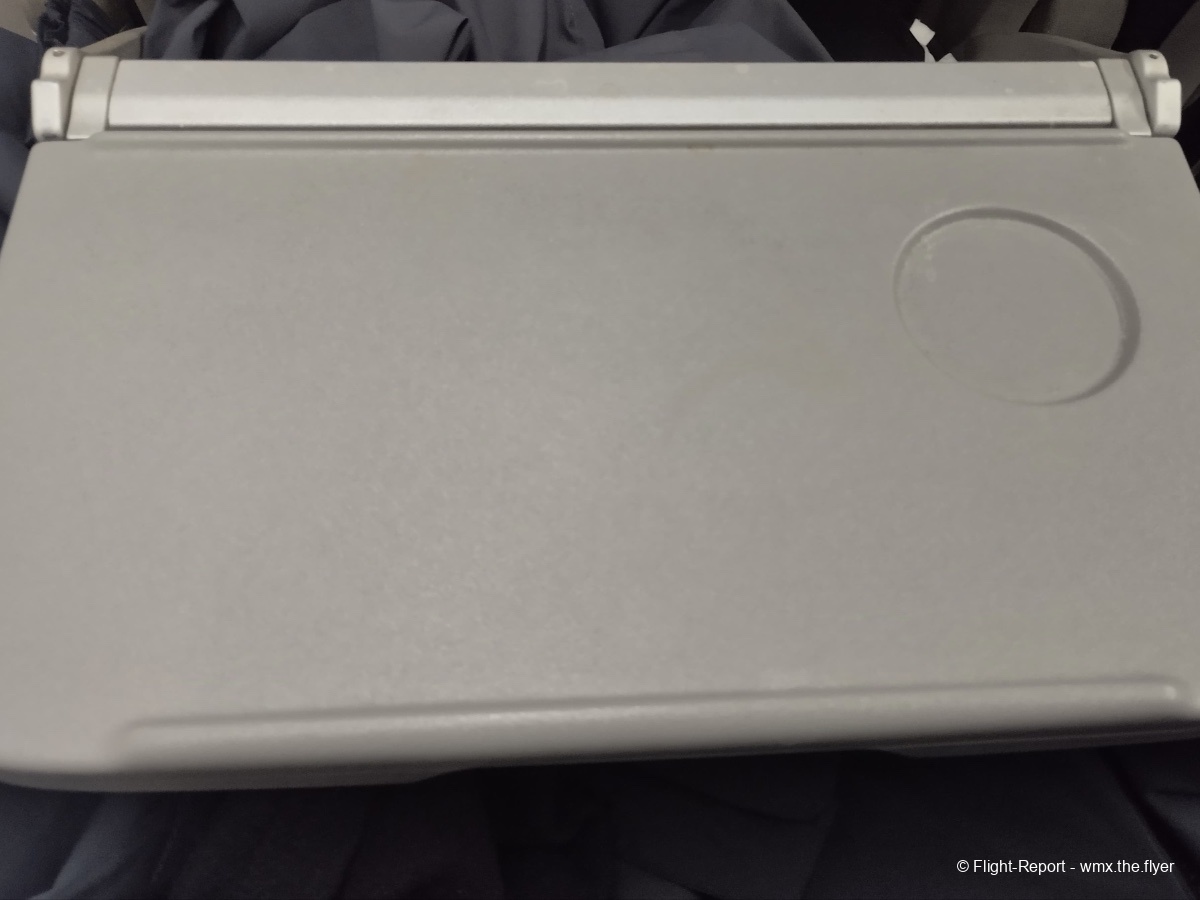
Individual air nozzles
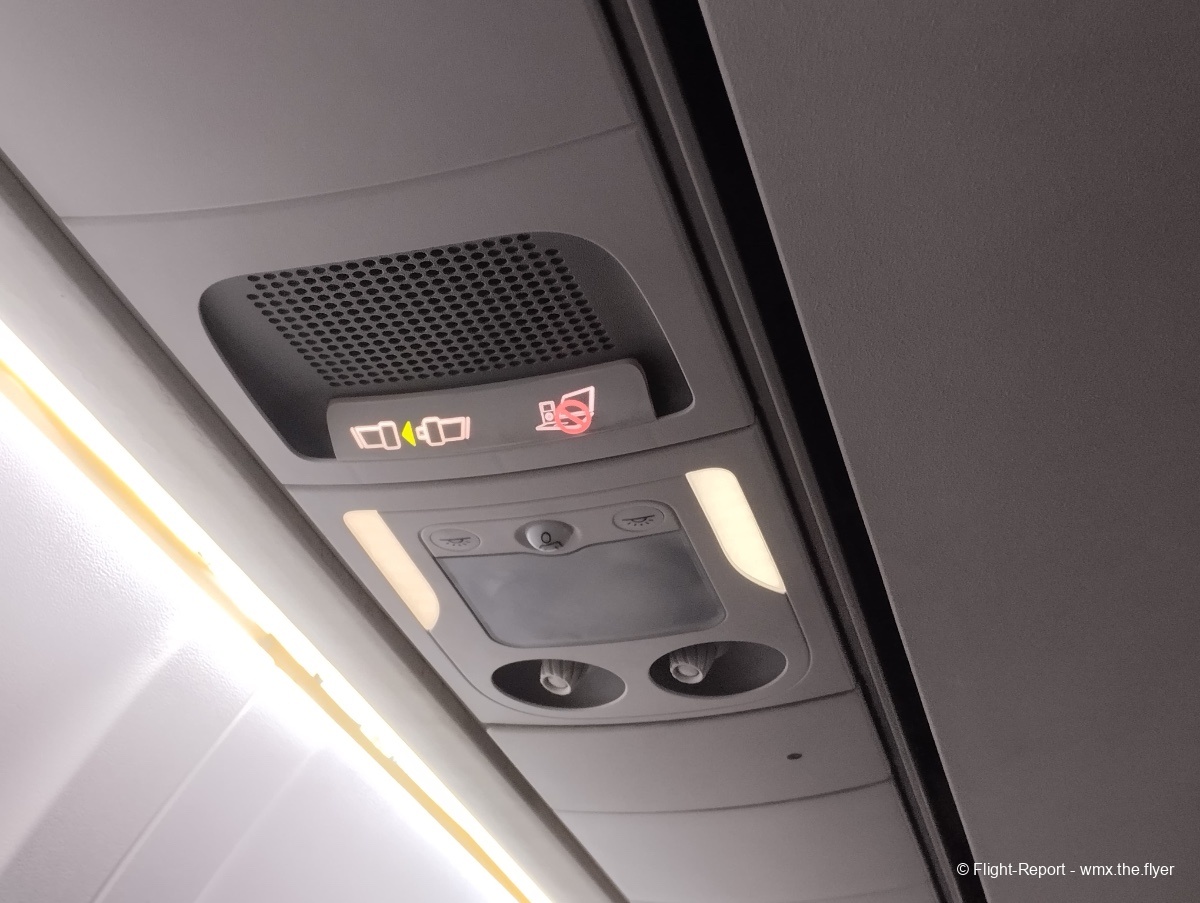
Some thoughts about the seat:
Seat Comfort: The seat was generally well padded and comfortable. The lack of a proper headrest was noticeable however.
Legroom: The 29” seat pitch is bearable for a short hop like this, but at around 6ft (182cm) in height my knees were pretty much firmly pressed against the seat in front for the duration of the flight.
Seat Storage: There is a small handy seat-back pocket in front which is large enough for most personal items.

Taxi + takeoff
At 16:17 our aircraft was finally ready for pushback, and we started our taxi north on Taxiway A.

We turned onto runway 04 to backtrack on the runway before making a 180° turn to line up for takeoff from Runway 22.

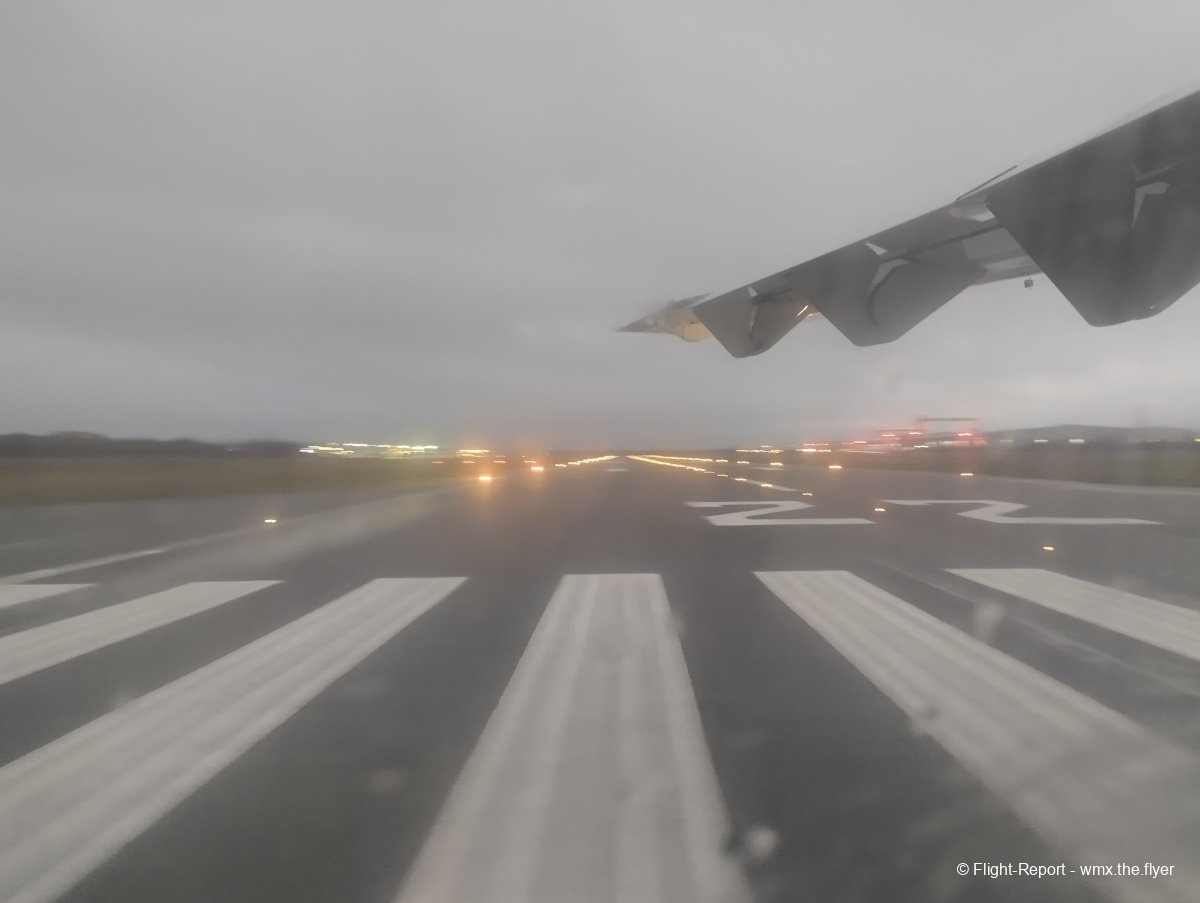
The aircraft spooled up at 16:23 and lifted off just 28 seconds later, 1 hour and 8 minutes behind schedule.
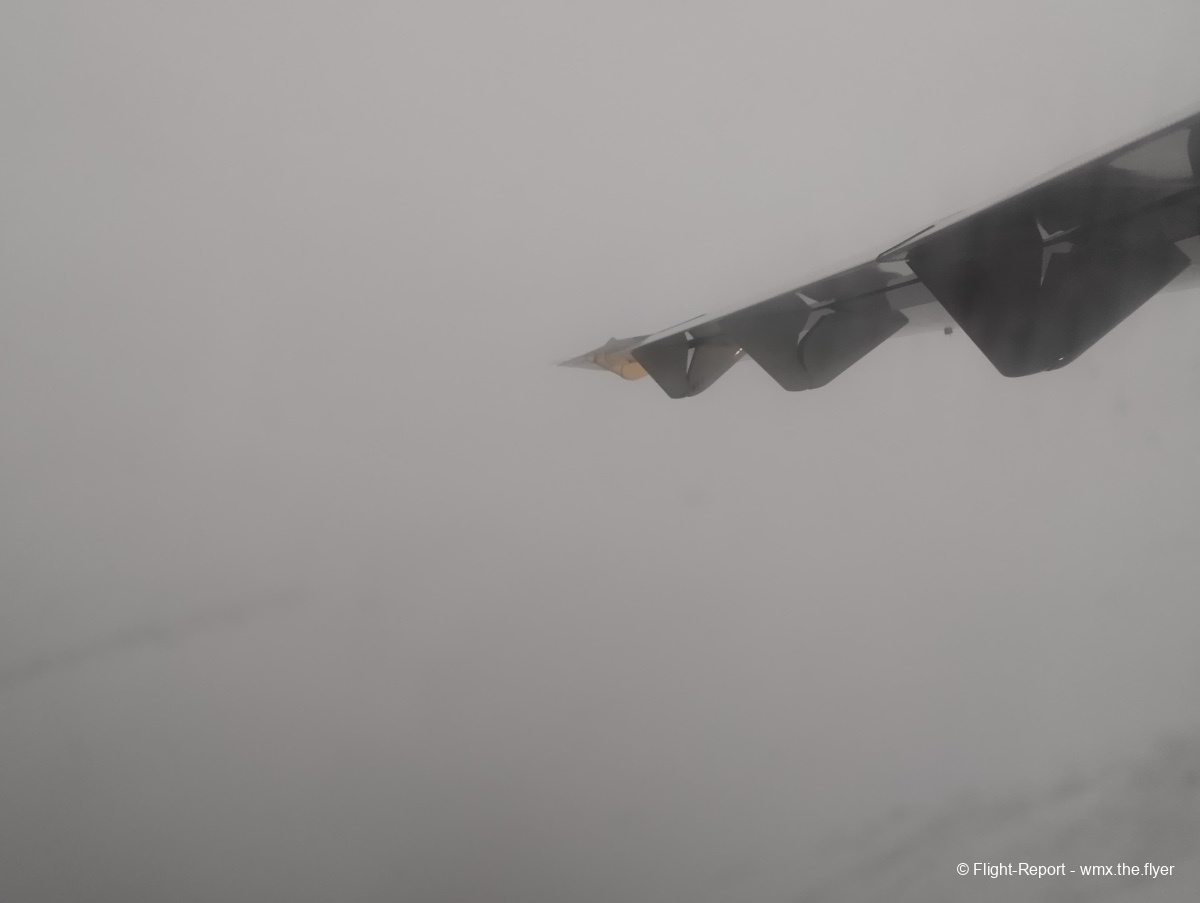
Flight path
Our departure out of Belfast City took us over the Irish Sea before reaching Scotland, where we overflew Galloway Forest Park, then starting our descent over Southern Scotland into Edinburgh.
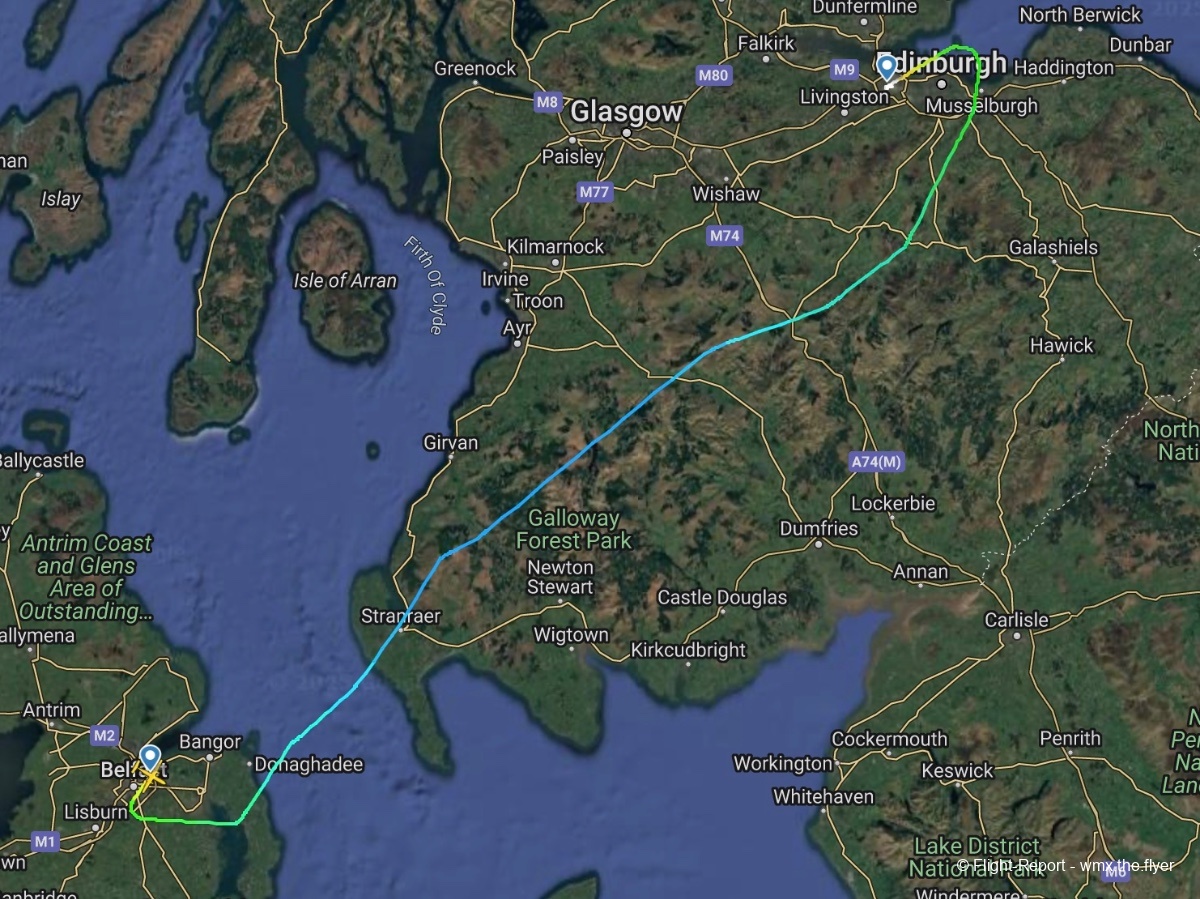
We cruised for 9 minutes at 15000ft.
In-flight
The flight went by without issue. I watched the sun set outside my window as it became darker and darker outside.
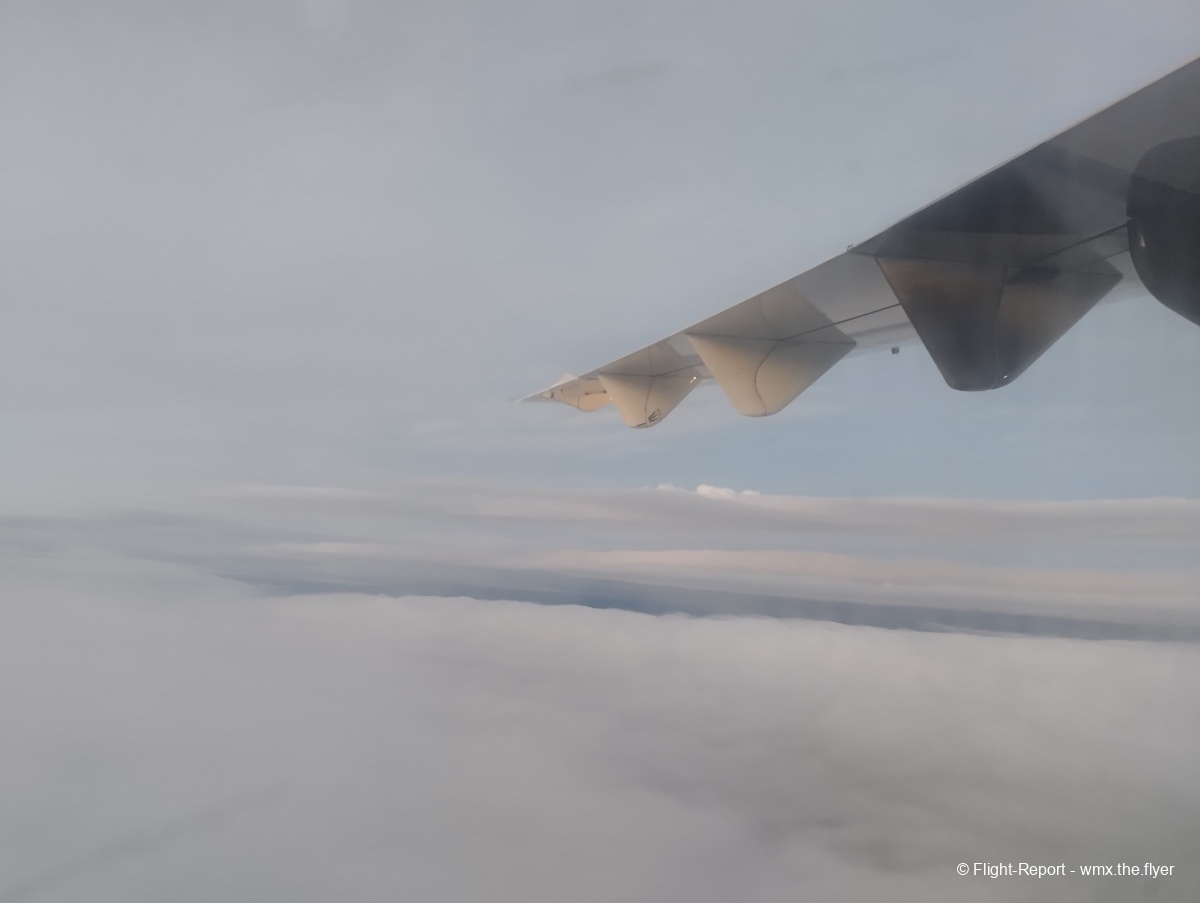
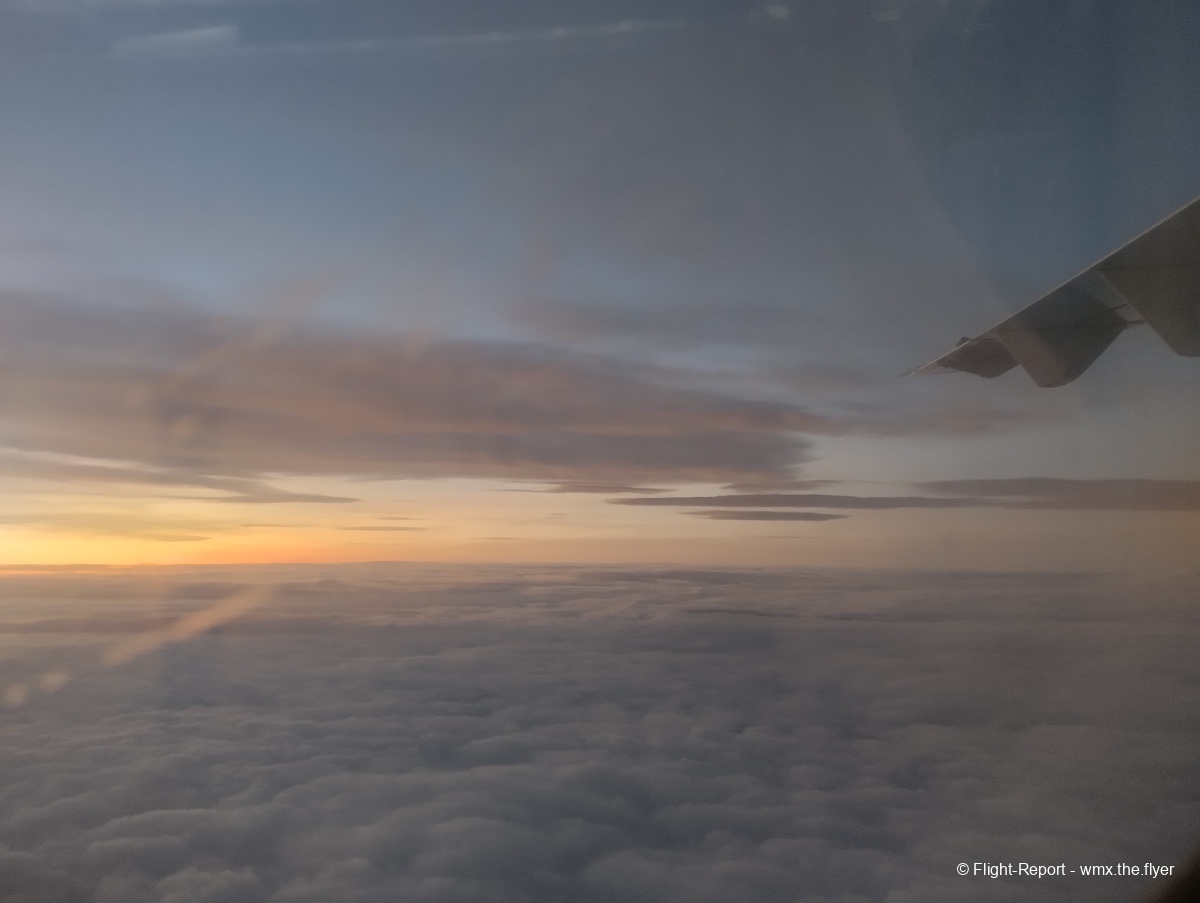
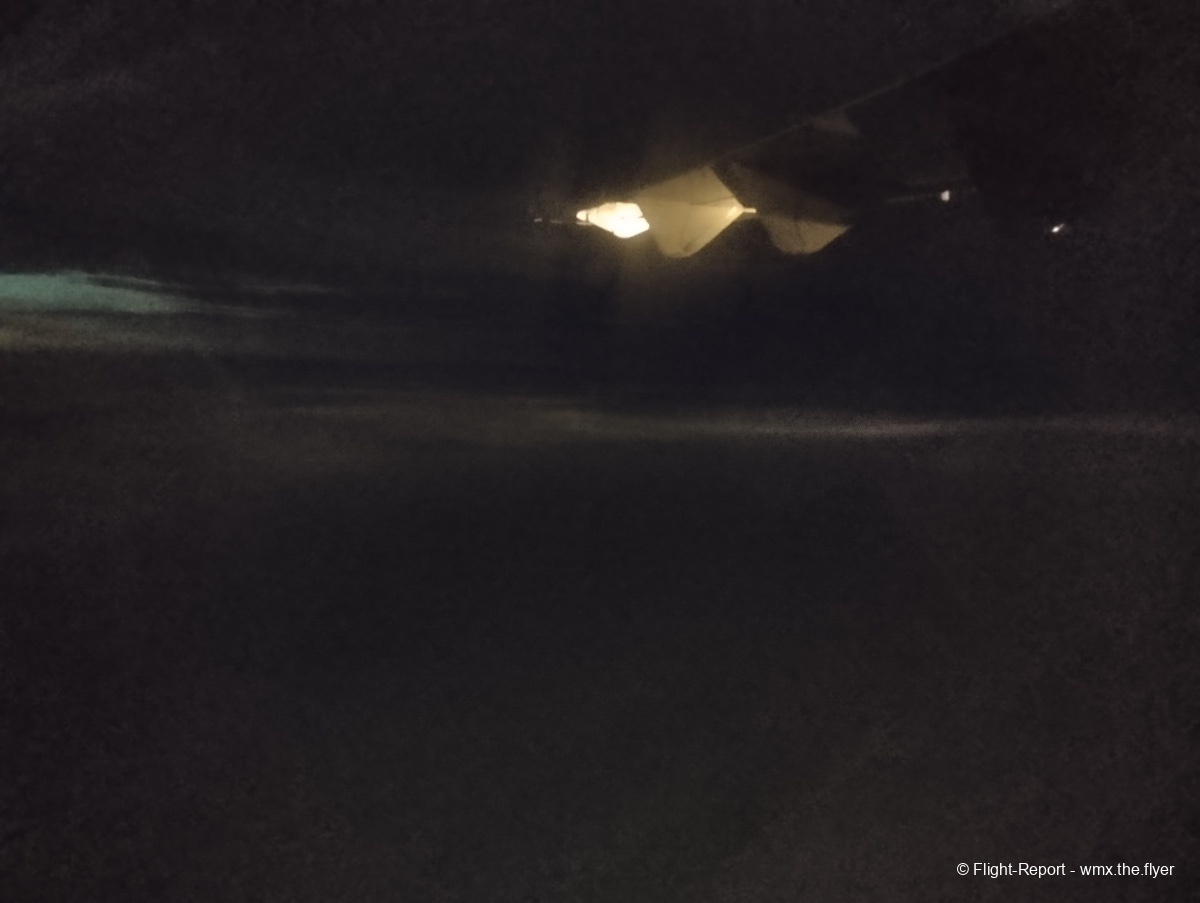
I paid a very quick visit to the lavatory just before descent. The ceiling was really low; my head was pretty much touching it. Unfortunately the tap was out of order, so there were bottles of water where passengers could use to wash their hands with.


Food and beverages could be bought from the buy-on-board menu. The prices seemed rather steep.
Cabin Crew
The cabin crew onboard this flight were generally friendly, though not much of them were seen due to the short duration of the flight itself.
Approach + landing
The aircraft approached from the south, overflying the suburbs and towns just outside the City of Edinburgh. The aircraft made its turn over the sea just north of the city to line up with Edinburgh’s runway 24.
The aircraft touched down at 17:07 local time, about 52min behind schedule, and in my case, almost 25 hours late.

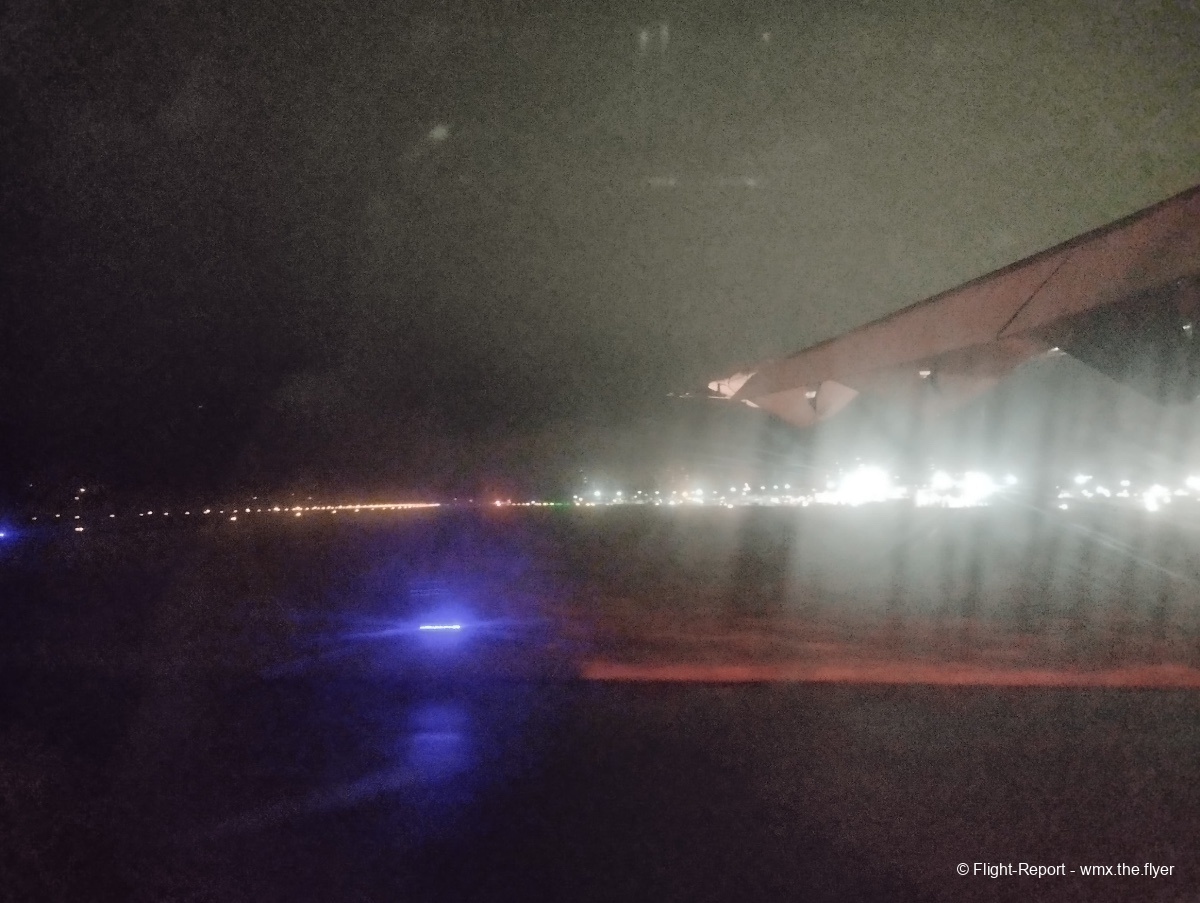
The aircraft turned off the runway onto Taxiway B, then heading the opposite direction on taxiway A. We then taxied on Taxiway L before turning onto Taxiway G, then finally parking on the Southeast Apron at one of the stands.
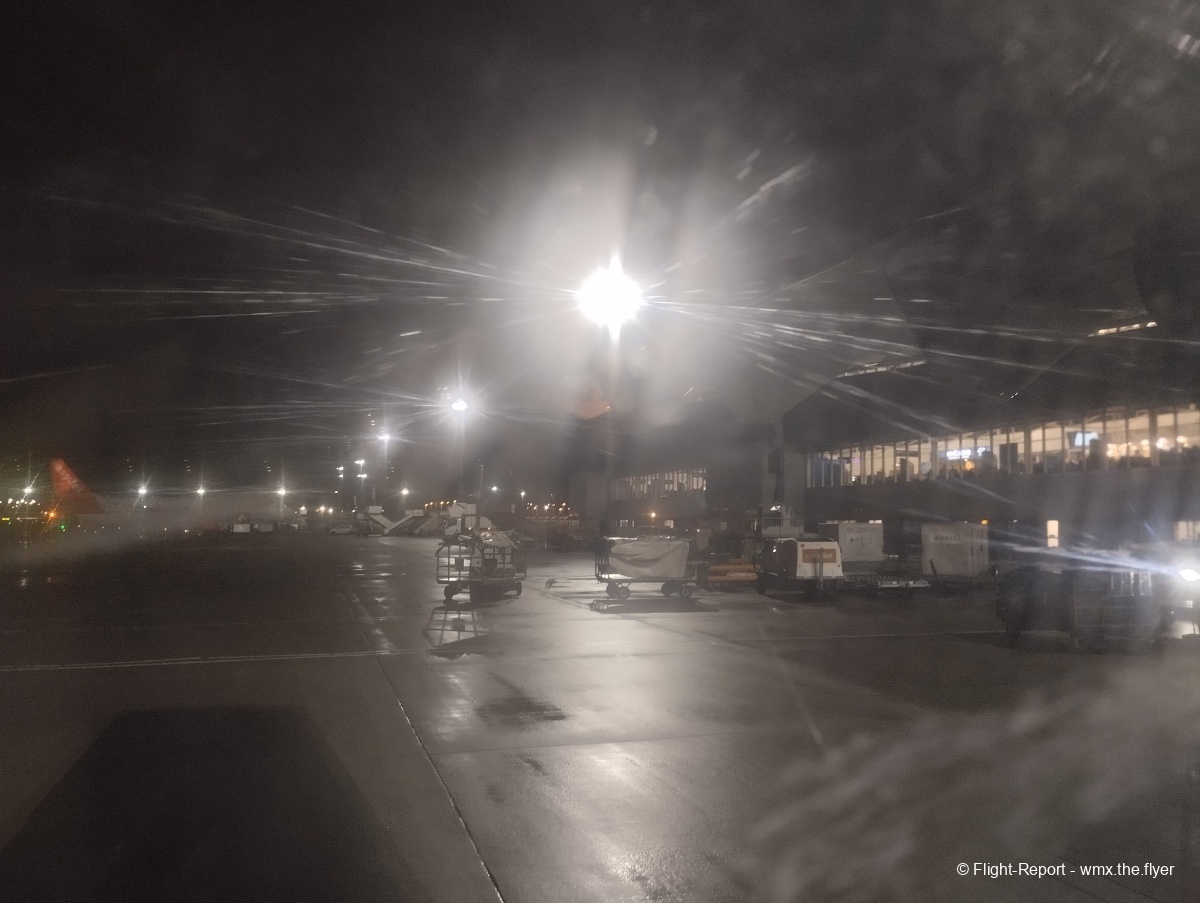

Deboarding was quick and I managed to snap a few more pictures of the aircraft before I headed into the Terminal.
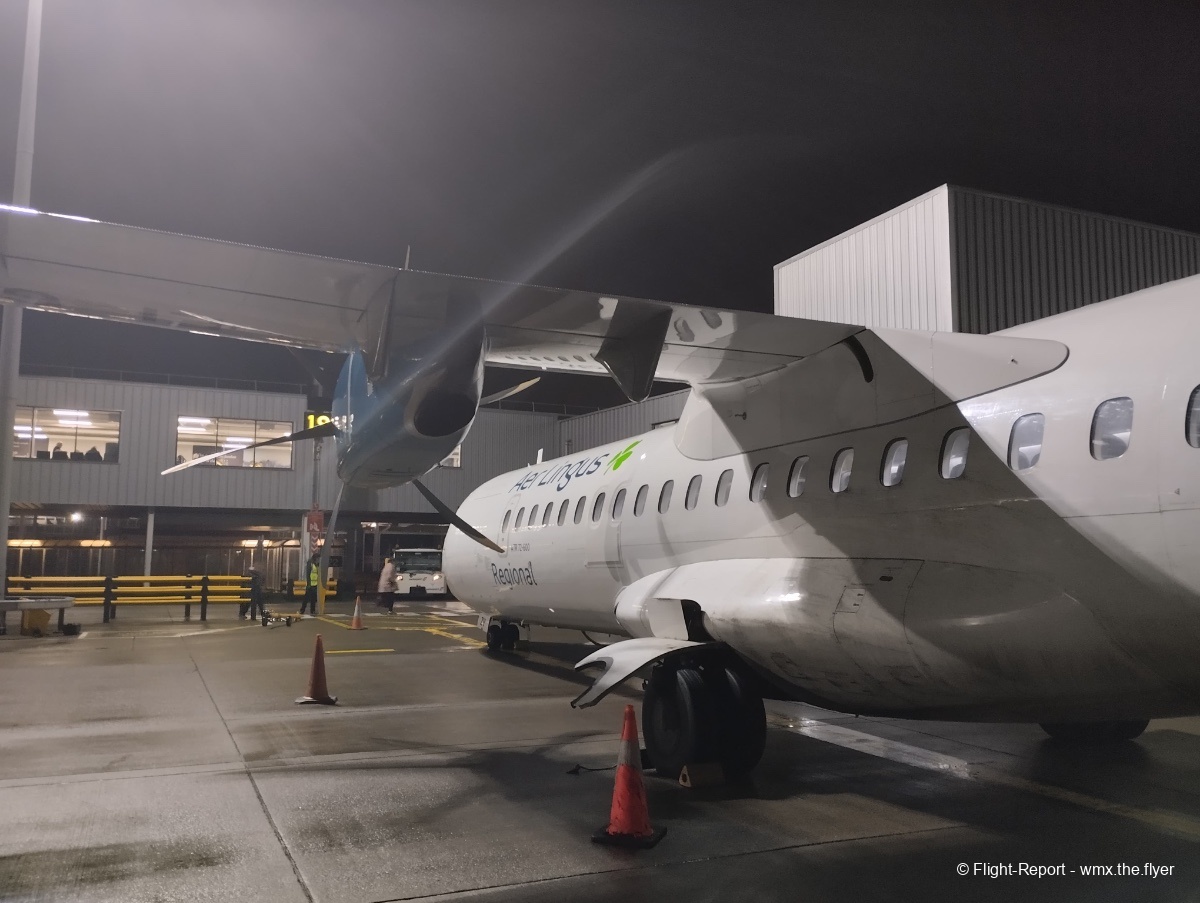


Arrival airport - Edinburgh edi
From the Southeast Pier where I had entered the building, there was a long walk through a narrow hallway before entering the main terminal building.

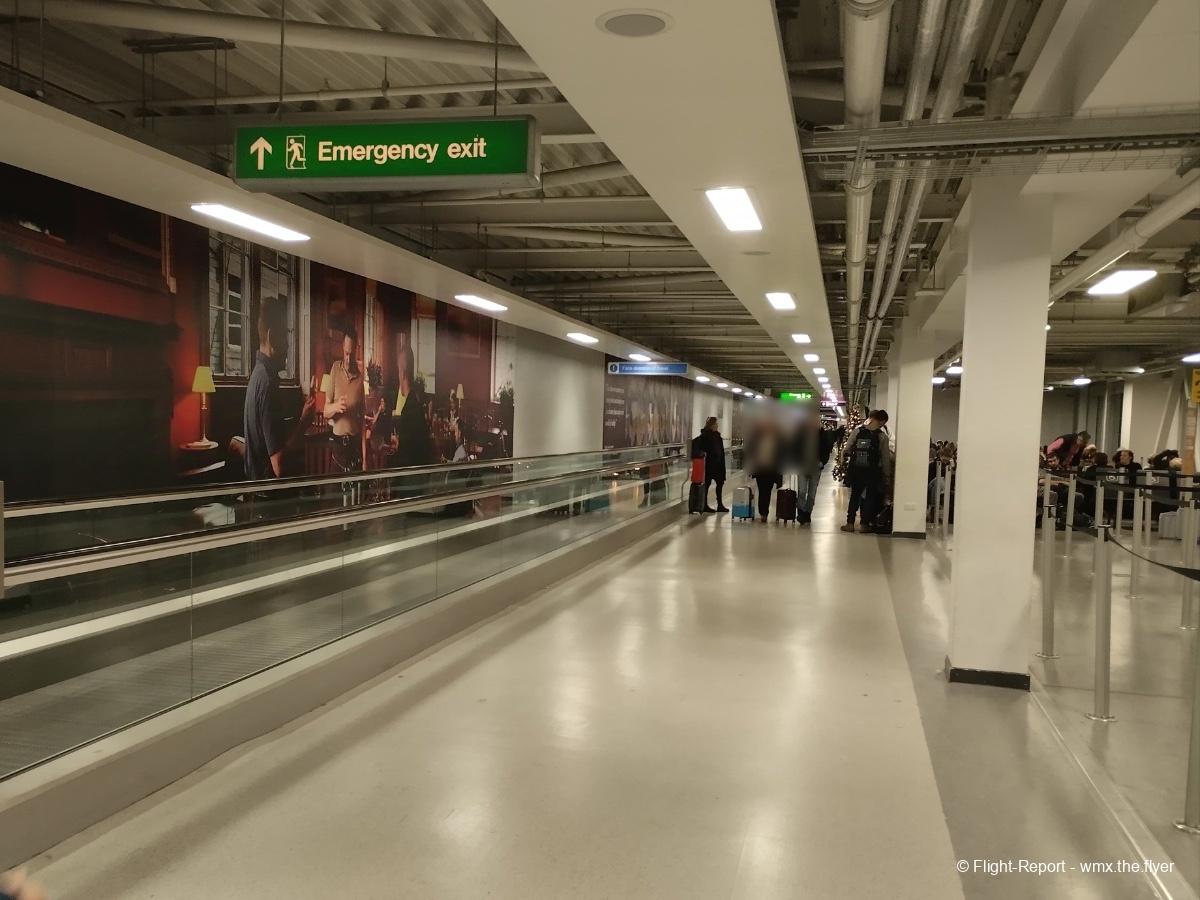
Here, just down a flight of stairs, was the baggage reclaim area.
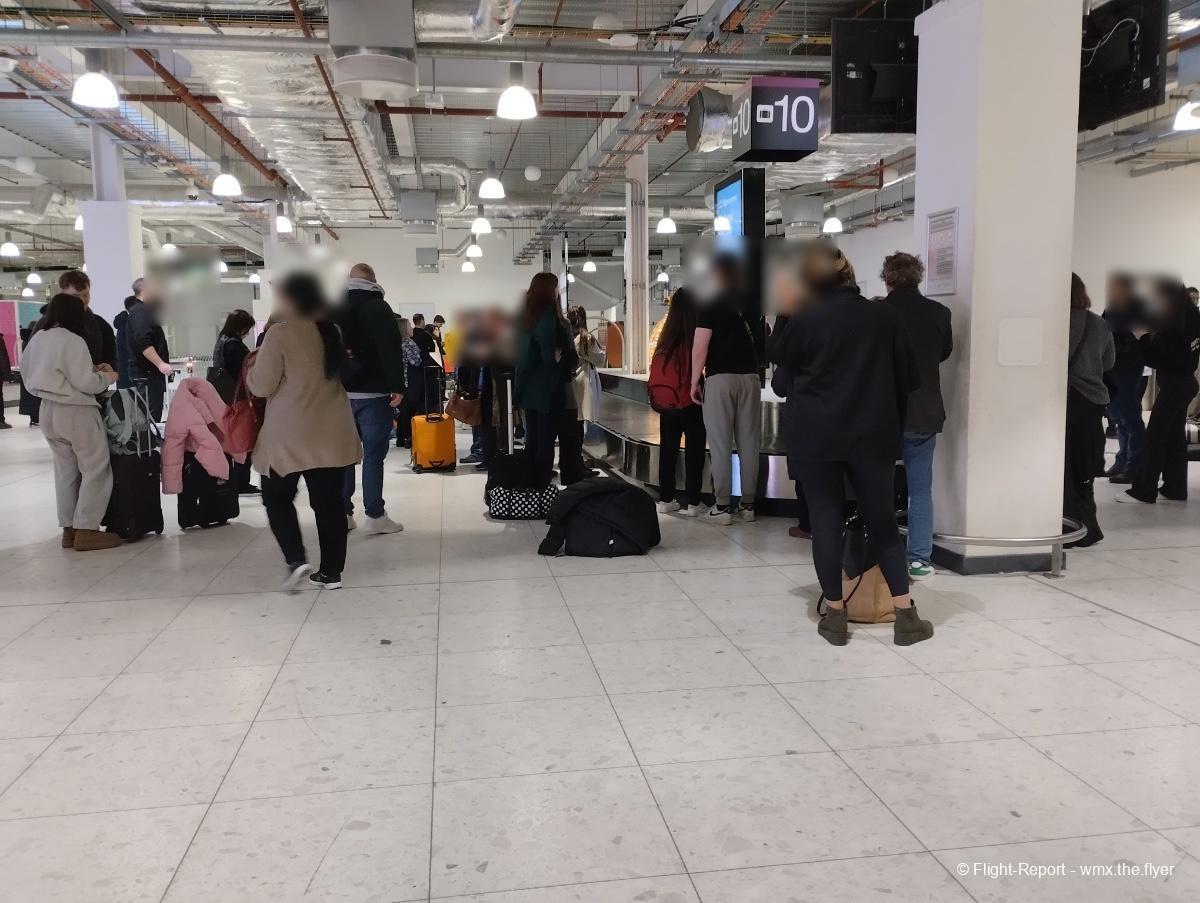
After that was a small clutter of shops before the exit into the cold Edinburgh evening.

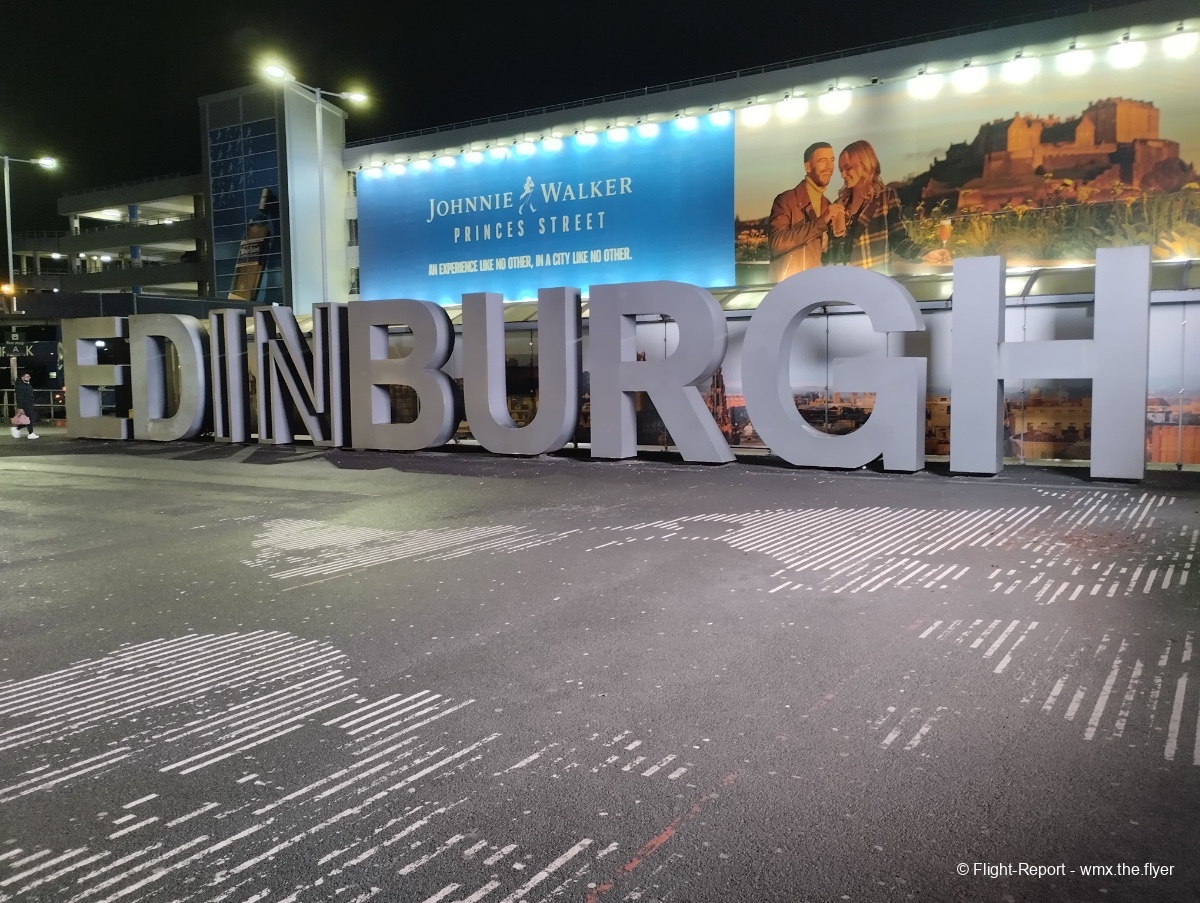
History and current operations at the airport
Edinburgh Airport (EDI/EGPH) started off in 1916 as Turnhouse Aerodrome, serving the Royal Air Force during the First World War. The airfield was utilized for military use until after the Second World War, when it opened for commercial traffic in 1947. In 1977, the current terminal building was completed alongside the current runway (06/24), which was able to take pretty much all modern airliners including the Concorde back then. The current control tower was built in 2005. Edinburgh Airport currently serves 152 destinations with 33 airlines. Edinburgh Airport’s busiest year was in 2019, when it handled 14700000 passengers, making it the busiest airport in Scotland.
Transport to/from the airport
Edinburgh Airport is well connected to the city centre by road, bus, or tram. The A8 road, which connects Edinburgh with Glasgow, runs past Edinburgh Airport. Public buses, most notably the Airlink 100 service provided by Lothian Buses, runs every few minuted between the airport and the city, connecting the two in around 25 minutes, which was exactly what I did this time round, at a hefty price of GBP5.50 though (that’s more than the airfare portion of my flight!). The Edinburgh Trams service also makes a similar trip toward the city centre, though at an even higher price.



